#(at least they put effort into making new designs for their adaptation to give it a unique identity. What a novel concept)
Explore tagged Tumblr posts
Text
Idk what y'all are talking about, there's only one Live Action Adaptation of How To Train Your Dragon, and their Toothless Design is PEAK.

#I know a lot of people really don't like this boy but I am his number one defender#get behind me my beautiful skrunkly boy I will protect you#If httyd:ls Toothless has no fans then I am dead#the Live Spectacular Dragon Designs are simply all Peak#argue with the wall#(at least they put effort into making new designs for their adaptation to give it a unique identity. What a novel concept)#how to train your dragon#httyd#how to train your dragon: live spectacular#httyd:ls#Toothless#Toothless fanart#Amity Doodles
24 notes
·
View notes
Note
(I'm allegory anon) thank you for your response. I will say, I'm kinda confused by what the writers mean by the kwamis being "industrialized" because I'm not sure if that's the right word for it? Like Gabriel wasn't really trying to turn the kwamis into some manufactured product, right?
(Allegory post for the curious)
I'm assuming you're referring to this statement about the season five final:
In the next scene, we can see Marinette taking the miraculous that have been standardized and industrialized by Gabriel and putting them back in shape. The writers specify that this is a parable about craftsmanship vs industrial production. The miraculous will now be adapted to every person, but we can’t see what they look like just yet! In this new world, the powers are all shared, among people who they trust and know will work for the common good. They joke that the "Avengers" shot at the end with all the heroes is something they’d been dreaming of.
The general idea here is that they redesigned the miraculous for season six to better suit each character to show the difference between Marinette and Gabriel. Marinette personalizes things while Gabriel went for sterile mass production with the rings.
This is an incredibly surface level idea that doesn't really work the way they want it to because the shape a miraculous takes doesn't matter to the story. The truly unique thing about each miraculous is the power it gives and the Kwami you get to be friends with. Those things never changed and will never change no matter what form a miraculous takes. They could have all stayed rings and been fine which completely undermines the idea of this being a parable because parables are all about teaching simple moral lessons. It's hard to see how a magical accessory being a little more personalized is teaching some kind of lesson when it's just an ascetic thing.
This is extra true because, as far as I'm aware, the show hasn't made a big deal about the redesigns. From the few stills I've seen, it doesn't even sound like the designs were changed all that much from what they were pre-rings. Because of all these issues, this statement from the writers just comes across as pretentious. They're trying to claim depth for the narrative without actually putting that depth in the narrative.
For this idea to work, the Kwamis being rings would have needed to have some sort of negative repercussion. At the very least, they could have shown various akumas struggling to use the powers they'd been granted, implying that the powers had to be given to people who are uniquely suited to them. But we didn't get that. The powers feel incredibly generic and - outside of Adrien - no one has ever struggled to use the ability they've been given. We don't even see Marinette asking each member of the team what item they want which is not how personalization works.
I keep thinking of that My Little Pony episode where all the ponies cutie marks got messed up (that's the thing that tells a pony what their special talent is). The ponies had to fix their cutie marks by doing what they were actually good at to show how their talents were so integral to who they were, cutie mark or no. That's a similar concept to this and shows how this kind of thing is supposed to work. Correcting the marks was mainly done in a 3 minute long song, so here you go in case you're curious and haven't seen this before:
youtube
This is how you quickly show why each character is unique and why their seemingly surface level thing (cutie mark) matters on a deeper level. My Little Pony actually sets up and resolves this conflict in a single episode, playing off of themes established in the series, but keeping the specific conflict contained to 20 minutes. Gold star to those writers. It was very well done.
Of course, Miraculous could never do this level of depth because Marinette had to redesign sixteen miraculous which would eat up a lot of time, but they could have at least make a token effort to show her and Alya talking about it or something. Maybe the first episode of season six will do this and I'm being too harsh, but I really doubt it.
59 notes
·
View notes
Note
the show chb logo was also ripped from fandom, like in the past decade all the official chb shirt had the logo without the circle and then the fandom started doing and the show went for it, sorry your tags reminded me of that
[Link to post/tags in question]
Yeah, I know Delphi Strawberry Service has done more circular-based CHB shirt designs for ages, and I've seen the more circular-based designs floating around for awhile. I think Magicbysab's circular-based CHB shirt designs also predate the show design? Those are just the ones I can think of off the top of my head. I understand on a level that if they did base it off fandom designs, particularly if they're basing anything on widespread fanon or fandom-based concepts, it can be difficult to pin down credit or may even seen unnecessary. But if they're going to be doing that I feel like at least they could hire like, a fandom consultant of sorts? Instead of just ripping off from the fandom, hire someone from the community who produces that already so at least there's some recognition and acknowledgement of where it originated.
Heck, in some instances if you ask around in the fandom it's not hard to pinpoint who specifically popularized certain concepts! I could talk for ages about Cherryandsisters being a driving force behind photokinesis!Will, or Saberghatz with plague!Will (tbh between the two they spearheaded a ton of early Will/Solangelo fanon), and I swear Drksanctuary alone is behind like 50% of Alabaster fanon, etc etc etc. People in the fandom know these things! Heck, we know ReadRiordan company knows how to do that kind of thing! They commissioned Viria for the official art, and the UK Riordan newsletter reaches out to fans all the time to feature their work (with credit, they're one of the better ones)! Though in Rick's book tours he did showcase Viria's art (at least with credit) without asking before she got commissioned, and during the Tower of Nero book tours they actually straight up stole a solangelo edit from Pervysloth with completely zero credit (link is to my canon url readriordan parody blog).
I think it doesn't help as well that Rick and his editor allegedly use the fandom wiki in place of a series bible. The PJO wiki is notorious for putting inaccurate information or fanon onto pages at random and having no sources. (What I wouldn't give for the PJO wiki to have frequent book/page sources a la Warrior Cats wiki...) There are what, now almost 18 books in the main series alone? Of an extremely renowned best-selling series that's 20 years old and now being adapted for TV? And they STILL don't have a series bible? That's like, step 1 of writing a series. This kind of reliance of the fandom for resources and concepts definitely isn't new for them.
It just feels so bizarre as to what it says about how the ReadRiordan company views the fandom and the creatives within it. I understand that trying to figure out how to give credit to the concept of "CHB shirt design, but circular!" is difficult, if you even can find out who did that first or popularized it. But if you're going to rip things from fandom, at least find somebody to try and credit? Show that you put in even the tiniest amount of effort? And if you get it wrong and people know, they'll correct you and that's that! But ReadRiordan just keeps trying to actively obscure these kinds of things, even with their own media, not ripped from the fandom, which makes it feel all the worse when it gets pointed out. And a lot of the time the whole reason those concepts get popular is because they're filtered through big names in the fandom! The fandom is a community! We know these people! We can point to them and explain exactly what they popularized! Remember how Velinxi popularized long haired Piper with the heart-shaped flyaways? Goodness only knows how many fandom designs are heavily influenced by Viria and Minuiko and Burdge (and Indigonite and Fuocogo and Ikimaru and Thecottonproject and Joker-ace and Sixofclovers and Vikingmera and Saber and Cherry and and and-). If you are in the community this stuff is easy to find. But Rick and the ReadRiordan company clearly being ~5 years behind with fanon pretty obviously tells me that they're not in the community at all, and aren't bothering trying.
#riordanverse#pjo#readriordan#pjo tv crit#rr crit#Anonymous#ask#long post //#sorry i am passionate about fandom history and crediting artists#its late and im too lazy to proofread right now so im just throwing this one out there#apologies if it's nonsensical#anyways Rick and ReadRiordan stop ripping off literally everyone challenge#stares pointedly at Rick blatantly recycling his own writing. its not a fun callback my guy thats just lazy writing#percy making a dam joke to himself in SoN? cute callback#solangelo falling into tartarus scene in TSATS being a direct rip of percabeth in MoA/HoH? what the hell man
77 notes
·
View notes
Text
3 - 9 This Murder is Mine
Had a mild epiphany last night while watching the Golden Globes
I imagine the Murdle fandom mostly consists of people who enjoy books and live-action TV/movies
So of course they'd be put off by the cartoon. I made it for the animation fandom!
My passionate love for cartoons and the way they tell stories can technically go back to since I was born lol, and I use inspiration from many beloved media in both the designs and storytelling of the Murdle cartoon - maybe it's because I put in more effort into making it a good standalone show instead of just a murdle adaptation
It's sad that I'm the only one who will ever be able to see it to its entirety in my head, while I try to include as much detail as possible there's only so much that can be conveyed through writing, as the visual version in my head also contains their face expressions, body language, and voices which I think help convey emotion further
Anyway enough of that dumbass rambling
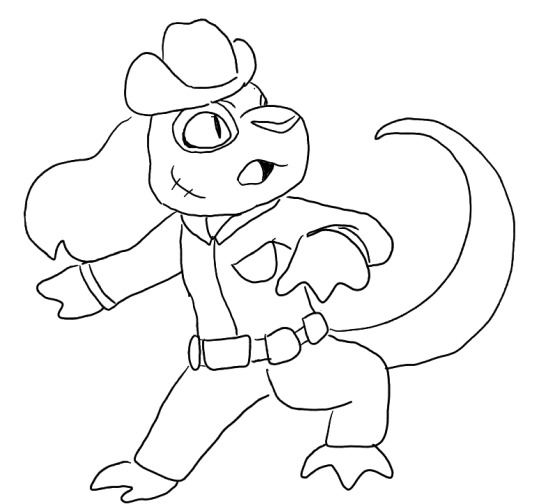
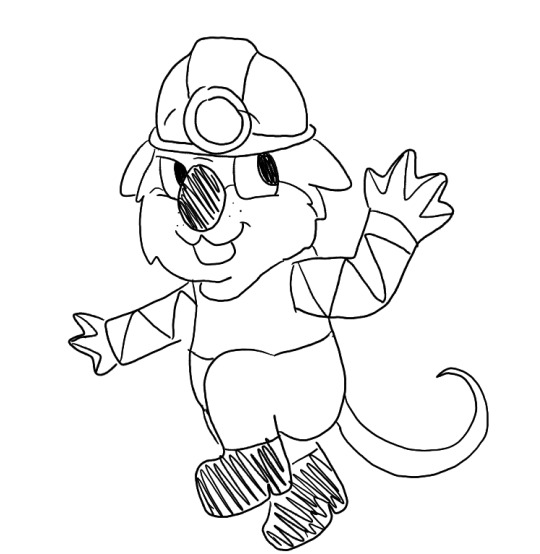
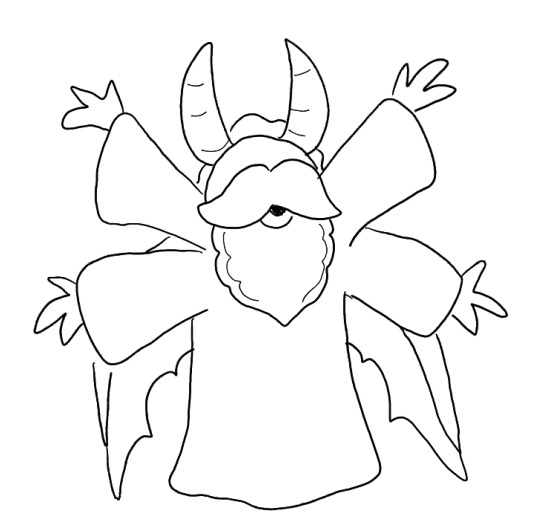
Look more drafts!
I don't... love them but uhhh they'll do for now
Yes Sepia is related to Cobalt, they are brothers
I want to draw Horsegico but I can't draw horses goddammit
DON'T READ THE EPISODES WITHOUT READING THE BOOKS!!
Graphite is cautious as she heads closer to a big ol’ mine. She gets the feeling that someone is following her, and jerks around. Giant Logico has nowhere to hide! Maybe his new size isn’t such a good thing? She runs over to him.
GRAPHITE: What is your problem?! LOGICO: I need to figure out what you’re up to. GRAPHITE: I’m not… up to anything, just get lost. Or there will be consequences.
Logico pretends to canter away. But he’s not off her tail yet. After hearing some crashing and screaming, he rushes into the mine as fast as possible. Graphite is gone, and a disembodied leg lies on the ground - a murder definitely occurred. Obviously. But was it one of the people here, or was it Graphite before she got away?
Sheriff Sandy is back from the dead, and a tall man and a short man are also present.
SHORT MAN: [grabs Logico’s face] GOLD! I’M CALLED GOLD IN THESE HILLS! LOGICO: [angry neigh] DON’T TOUCH ME! WHO THE FUCK ARE YOU?! GOLD: G- G- GOLD!!!! I’M CALLED GOLD, RIGHT HERE IN THESE HILLS!! LOGICO: Okay. Doesn’t mean you have to scream and GRAB ME!
He turns to the tall man instead, expecting an introduction.
TALL MAN: Hey there big guy, with your one big blue eye.
Logico assumes the man is colorblind, but then realizes that he is in an entire different body at the moment.
LOGICO: What’s your name, though. TALL MAN: I’ll give you a hint. I’m Union Man Mint. I fought the boss, and the boss won. Now I’m out of a job, and on the run.
Logico could just kill somebody at this point. A suspect who RHYMES?
LOGICO: Please end me. SANDY: Twilight, look out!
Gold runs around at inhuman speeds, carrying a giant book on his head.
GOLD: Y’ALL GOTTA READ THIS BOOK, Y’ALL GOTTA READ THIS BOOK GOOD! IT’S TALKIN’ ABOUT THE GOLD, GOLD IN THESE HILLS!
Logico’s legs shake. The dream can’t go on for much longer. Can it?!
LOGICO: I can’t do this… they’re too… horrible… SANDY: I’m sorry Twilight… I swear, you don’t gotta worry about Mint. He’s been my pal for as long as I can remember. MINT: I’m not here for gold - not today, at least. Just searching for mushrooms, to make up a feast.
The terrible rhymes swirl in Logico’s head, slowly drowned out by “GOLD IN THESE HILLS!!” He can barely keep himself together…
IRRATINO: Psst. LOGICO: Thank god you’re here… IRRATINO: You’re doin’ a good job, Logico. And I gotta feeling you’ll be outta here sooner than ya think. Just keep pushin’. LOGICO: If I do… will I wake up? And you’ll stop talking in that dumb voice…
Ghost Cowboy Irratino nods. It’s really weird for Logico to be able to look at him at eye level. But once again, he fades away.
Logico takes a deep breath, accidentally letting out a very equine snort. He knew there was something very wrong about that Mint fellow… and he’s entirely right!
MINT: I killed her, it’s true! But look at her form!
He leads Logico to the rest of the body - Graphite was the victim!
MINT: If you knew what I knew, she couldn’t stay warm. I did what you could never do - I took the criminal, and split her in two!
Logico is very disturbed, this is getting kind of hectic. At least none of it is real? Or was it? He has to go confront Ivory again, and runs to the courthouse. Little does he know that Mint is following behind!
The end!
Guess Graphite and Sky aren't getting together sob sob
Next up marker drawing of every book 2 character!
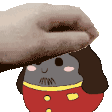
The power of Goat Lord compels you!
See you next time murdlers!
4 notes
·
View notes
Note
Putting Sylffa in the spotlight: 1, 8, 13 and 30!
Just an asura ask game
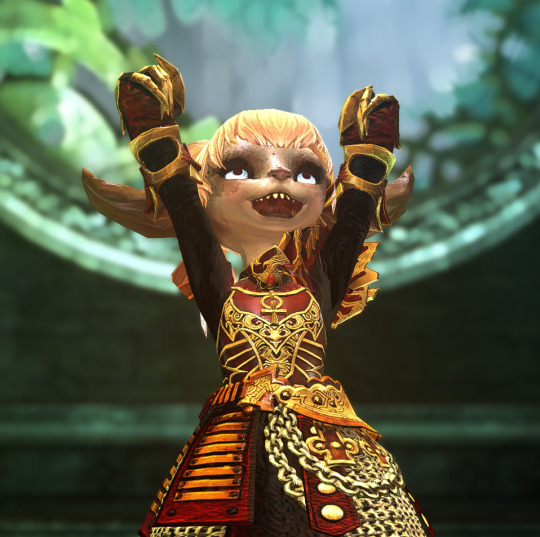
Ty so much for the ask!! Time to stuff another decent wall of lore under a cut! Because yep, this one's definitely gonna be long, too.
1. Do they fit well into asuran society or are they more at home with other races? How do they feel about fellow asura? Is it because of their personality or something else? Is there any deal maker or breaker?
Sylffa tends to be pretty adaptable, shifting gears depending on who she's working with and what they expect. But when it comes to what group she LIKES more... She finds asura society way too stuffy for the most part, too much bureaucracy. Sylffa's more the type to want to just go out and get her hands dirty, paperwork be damned. On top of that, she's more than a bit fed up with their tendency to hoard knowledge all to themselves; Sylffa doesn't see the point in making things that will never actually see a practical usage. It's actually a big reason why she got along with Ruju! They might have opposite temperaments, but their interests are pretty similar. Likewise, she tends to prefer other asura that break the mold a fair bit, too.
Other races tend to find her madcap inventing style of 'throw things at the wall until something sticks' a bit unnerving though, so everywhere has its drawbacks. At least the charr usually like it when she straps laser cannons to everything, so that's a win? The jetpack that also launches shrapnel bombs was a hit, too.
All that said, she found herself most at home working with the Priory and eventually the Pact. There she can really put her wild imagination to work, coming up with all sorts of bizarre ideas that no dragon could possibly see coming. And mingling with all these other races gave her all sorts of new ideas, inspiring even crazier concepts than she'd ever had before. Variety is the spice of life as far as she's concerned; Sylffa's at her happiest getting to meet all sorts of people from different cultures and walks of life. It gives her the opportunity to explore much different perspectives and really stretch her creative wings! A lot of the time their ideas inspire her next project.
8. Do/did they have a krewe? If yes, describe them, their roles and tasks. If not, why?
She did, though she eventually left it behind to join the Priory. They'd been a small band of Dynamics alumni that all graduated together with her, just a few years above Ruju. While Sylffa doesn't work with them directly anymore she DOES keep in contact; they've always got a new story to share about whatever nonsense they've gotten into.
Sometimes they send her some of their newest tech, too.
Their specialty tends to vary a lot, though they have a soft spot for handheld machinery, particularly automated tools and equipment. Most agree that the best plasma-based welding tools in Rata Sum use their designs, and they double as a mid-range blast cannon in a pinch. A fully functional multitool! What's not to like about that?
13. What's their field of research of choice? Are they pursuing it or is something else taking priority? If they don't have one or more, why not?
Sylffa graduated from Dynamics with a specialty in engineering, though what that covers is pretty broad for her! She's worked on everything from the plasma multitool mentioned above, to specialized defensive golemites that bind together to form temporary barriers, to improved scanning hardware designed to increase sensitivity and reduce interference, to figuring out ways to build weapons into things that don't normally have weapons on them. Whatever she's working on, though, you can bet it's designed with field usability in mind. If it can't take a hit from a minotaur charging it down at full velocity what's the point??
Sylffa also assisted with some of the early engineering for the Pact airships, though that massive undertaking was very much a team effort. It's probably what she's the most proud of, though!
She doesn't have much interest in maintaining patents or writing research papers though; Sylffa likes using her knowledge base for practical applications, finding that much more interesting and more fulfilling, too. Seeing her work actually help people-- even if just by making construction a bit easier-- is like a proof of concept. She doesn't need recognition from the Council or a bunch of professors. Being appreciated by the people actually using her designs is worth far more to her than some award she could stick on a shelf.
30. Free space for 3 pieces of trivia about your asura!
- During Sylffa's first year at Dynamics she was BRIEFLY assigned as Ceara's roommate. This arrangement lasted less than a week, largely because Ceara didn't want a roommate and made the experience as infuriatingly insufferable as possible. This little asura tried VERY hard to break through that icy exterior, but Ceara just wasn't having it. Sylffa finally gave up and requested a transfer after she returned to the dorms to find her bed had been "accidentally" subjected to an anti-gravity experiment, and it was now irreversibly stuck to the ceiling. Under less antagonistic circumstances she might've found that funny, though.
- Sylffa's actually a Warrior, Berserker specifically! She has no magic to speak of, but while she doesn't fight much she can hold her own in a scrap when push comes to shove. Sylffa tends to rely a lot on augmenting her weaponry with technology, building bizarre contraptions that enhance the power of whatever she happens to be wielding-- and she really will use ANYTHING. If it's in range, she'll eagerly smack something with it. Sylffa is a firm believer that anything can be a weapon if you're creative enough.
- This girl is actually one of the big deciding factors that shifts Ruju's path across different timelines, and the reason that him going to Dynamics leads to becoming the Commander. They knew each other as little kids, so when she recognized him in college she quickly reconnected and pulled him into her friend group-- which in turn led to him giving up his bully shtick and meeting his own future krewe. The two still stay in contact long after, with her occasionally sending him weird experimental tech once they're both in the Pact. Sometimes he uses it, but he keeps a lot of it for mementos.
#gw2#guild wars 2#gw2 asura#gw2 asks#my posts#Explorer Sylffa#thanks so much for the ask!! this was a fun batch#she's one of my older characters (just got her 4th bday gift a few days ago) but i rarely do much with her HHFJJEDH#I gotta free this little rat... release her into the wild...#(I also need to flesh out her old krewe a lot more. wheeze)#I figure i'll post one ask per day so it doesn't get to be too much lol I've still got a few more from this set!
4 notes
·
View notes
Text
So my headcanons about Luke bringing back the Jedi Shadows after FotJ, and how I kind of imagine Vestara deciding to focus her Jedi training toward that, since it plays to her strengths, are now a very, very tempting excuse to write her ending up on a mission with the reformed Wraiths.
Obviously this takes place after Mercy Kill itself. I'm gonna say a timeskip of about a month, so Vestara's been a Jedi for five or six months (on a ten-month in-universe calendar). She won't be on solo Shadow missions until she's a Knight, so I hope at least like, five or six more years? I really have no idea what the frame of reference should be for how long it takes on average, but the point is that she's nowhere near there yet.
I might just leave the setup (how the Jedi know about the new version of the Wraiths/what exactly it is about them that she can learn lessons from them that she can't from the Jedi) ambiguous if I can't get it to make sense, but I do want to put some effort into attempting to make it make sense.
Most likely, they know of it through Tyria's kids, either the Sarkin-Tainer or Sarkin-Sandskimmer siblings depending on how much I care about sticking to earlier canon. So Jesmin's probably the first member Ves meets.
It'll surely come up almost immediately that Vestara's been on the holonews enough for several of the Wraiths to recognize her as a Sith. I imagine the fact that she's a Jedi now isn't well-known, because since the move to Shedu Maad they're in a lot better of a position to keep secrets from the galaxy, and the Jedi have enough PR issues already - they don't need people knowing they've taken in a Sith - so here she'll have to explain it, but I think if the Wraiths can take Scut in stride, this won't be very hard.
Related to that, one thing Vestara brings to the Wraiths is her birth culture's skills in use of the Force to craft glass blades that are durable enough that you don't have to worry about them breaking, and that don't show up on scanners meant to detect weapons. Very helpful for infilitration.
The shikkar itself is still a very distinctly Sith design, intended to cause a shitload of pain by leaving the blade in a target's body. Here, she takes a different approach. I've pulled the word "shikkith" out of my ass. These aren't designed with a deliberate point of weakness like a shikkar is, and as such they can be used multiple times. Each blade contains veins in the glass that can be filled with fluids such as sedatives or toxins, that can be released directly into a victim's bloodstream on a sufficiently precise cut. They wouldn't always use such a feature, of course, and most or all of the times they did use it, it'd be sedatives.
It's a similar principle to Scut's neoglith masquers, where someone takes an idea from their evil birth culture, adapts it to not be totally fucked up, and gives the Wraiths a useful trick.
And I've said it before, and I will say it again: Vestara needs more badass piloting sequences.
I don't remember that anyone on the second Wraith team that appears halfway through the book is a particularly good slicer, but I am pretty sure Vestara's a lot more than a light-duty slicer.
They probably do end up fighting the Sith at some point.
I'm sure I'll come up with more to be said here.
11 notes
·
View notes
Text
This is gonna be quick because I’m leaving my country tomorrow and I’m not returning until Sunday and I probably won’t post until Monday, but I have something exciting kinda planned out.
Over the past week or so, I’ve been creating character designs for a new fan made iteration of a very popular game series. I won’t say which series it is, but just to give a few hints, this series has been adapted many times (console games, anime, movies, books, mobile games, et cetera), and it has been long popular online, though it may be a bit less mainstream on Tumblr than it was back then.
This series in specific is one that I don’t play and one that I have heard and seen has had wasted potential, especially in the last few years, but I genuinely think that, were the company behind it to put more effort into their products, the series would be far more profitable- not that it isn’t, but still.
That said, I’m not making an entire game- if any of you want to do that, go on right ahead, but I have no experience in code or game making. For now, this project will be limited to its story, which I will be releasing in comic strips on Tumblr or novel-style chapters on Archive of Our Own.
Whatever the case, I think this project is going to be a lot of fun, and a lot of that comes from the story. It’s a story that I feel needs to be told, especially in our day and age where we find it so hard to go about life like normal. It’s a story about facing something you feel you can’t possibly survive and then coming out stronger than before. It’s a story I think we can all connect to on some level. For that reason, I’m all the more excited to share it with you once it’s ready.
In the meantime, I‘ll leave you all with this teaser. I know, the quote on a gold background thing is kinda corny… but oh well. Nobody said this whole idea wasn’t corny in itself.
That’s all I wanted to say. Thank you so much for sticking around with me! I hope to see you all very soon!
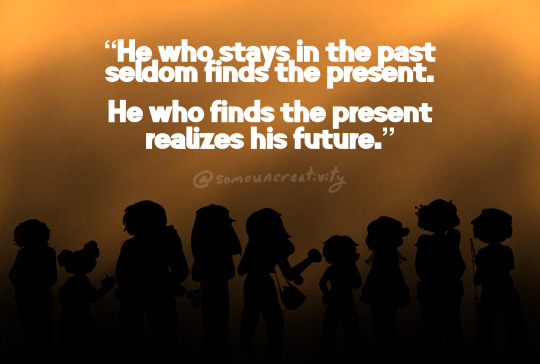
By the way, for those of you who want to know more, at least one of the silhouettes in the image above has a dead giveaway.
#just girly things#my mind is weird#my mind is all over the place#artwork#art#digital art#oc art#teaser#fandom#alternate universe#cartoon#announcement#no spoilers#original story#ig story#entering my villain era#original character#quotes#corny af#long post#i am working on it#new project#my wips#coming soon#fan comic#plans
5 notes
·
View notes
Text

The adaptations of Pilkey’s work strikes again, this time taking another crack of one of his franchises, Dog Man, a spinoff to Captain Underpants. Similar to Captain Underpants, I wasn’t as much as a fan but managed to recently read through them to brush up my knowledge.
The film takes plot elements from the first, third and seventh books; Officer Fame the cop and his canine companion, Greg, arrive to defuse a bomb set by Okhay City’s villain, Petey the cat. However, the wrong wire is cut, severely damaging the duo, resulting in the rather cryptic scenario where the surgeons stitch Greg’s head across Fame’s body. Without wondering where did the other parts go, the new hero arrives, named Dog Man, who makes a killing stopping Petey’s numerous crimes. Fed up with losing, Petey makes an assistant clone with the mindset of a toddler, before reviving a dead fish to fight against his nemesis. It’s up to Dog Man to rise up and put a stop towards his new nemesis, while the current one attempts to put up with his new tagalong.
So, I’ll really have to be honest here that I thought the pacing was all over the place. To reference the Captain Underpants movie, that felt short in comparison, as it focused on a rather smaller scale of characters and storyline, while becoming a romp throughout. While this was yet another romp, there were times that the movie would dip into some minuscule attempts of emotion. Take one scene for example where Dog Man would find out that his owner’s girlfriend left him, where that’s easily bypassed before it then moved onto the next part.
Another would have to be how the third act and its villain would fall into the levels of predictability. The moment where Petey spawns a clone, I immediately knew exactly which direction it was heading; a big bad guy who isn’t even that villainous inside eventually softens up because a cute kid gave him the big eyes. Granted, I liked how the kitten would begin a healthier relationship with Dog Man, but to have the villain slightly change tactics and gain a small tad of redemption fell straight back into a snore fest. To keep me entertained, there was an exciting and rather creative fight sequence where they made a giant robot to battle against sentient kaiju-sized skyscrapers. I was hoping this to be the saving grace, which was for the time being, but then the movie had to throw another villain into the mix.
While this wasn’t overall a bad display, I was expecting something new. Perhaps if the movie would slow down by not rushing its multiple subplots, I could have appreciated its story layout a lot more. Yet, this movie was meant to be a romp that wasn’t exactly meant to be focused on the story, but this isn’t a valid excuse.
While the story lacked, the jokes were a light improvement yet disappointment at the same time, where they could have used more time in the script writing department. Its physical comedy overshadowed the dialogue, as I couldn’t recall laughing that much at any quips or one-liners. None of Petey’s jokes landed for me, especially when his voice actor was trying, while there’s a repeated gag of his former assistant demanding her pay throughout the movie. This movie was worked on by the director and writer of quite a few animated comedies such as Animaniacs, Catscratch and the Captain Underpants series, where I can see the effort at least, just not his finest.
Well, they didn’t hold back on the animation. The animators replicated the simplistic designs of the books and the snappy nature of the Captain Underpants movie, yet went a tad mile beyond; to dwell with the style, they went with a quick frame rate speed, similar to The Peanuts Movie, in order to give off that feel of an ecstatic hand-drawn cartoon. May I say that I was really impressed by its display, especially with its excitable chase sequences across the city and numerous skirmishes between dog and cat. The breathed life into this movie from a simplistic comic style to a well-energised romp. The climax itself was a highlight to me and managed to keep me looking forward to the potential such as adding features towards skyscrapers in order to make them resemble kaiju’s. I was impressed by what we’ve had, as not only it didn’t feel like they copy the same style from the Captain Underpants movie, but managed to add the frame rate for a different variety.
As the characters themselves, they also have the same appeal as their predecessor’s, such as having them as the default roles but with some small story arcs thrown in there, both good and not so much. Let’s start with the canine cop himself, Dog Man, a determined and fun-loving officer of the law with a tendency to get the job done, yet has his own instincts to get in the way of professionalism. Honestly, everything about the character just worked if you accept this as an excitable main character and if you’re a dog person. When he’s happy, the tongue attacks, or when he’s sad, the puppy eyes show up, what more can be said? While I wished that they focused more on the emotional layout at first, I was favouring more for his innocent yet wholesome relationship with the kitten clone, even taking him underneath his wing for a better guidance. That’s also the same director performing the voice for Dog Man, even providing barks and other noises, entertainingly so.
To call Petey predictable can really go both ways, as he’s the standard Saturday morning villain trope pretty much done to death. I understand his appeal, but here’s my verdict; I really wanted to like this type of character, but I couldn’t find much to salvage from said cat mastermind. His main role was to terrorise the city with all sorts of weaponry and gadgets galore, such as his bomb even starting off the main’s origin. His vehicles and schemes looked visually-decent, but I couldn’t help but feel that I’ve seen superior works, regarding to many other cartoons that they were attempting to replicate. I can tell that Pete Davidson was attempting to make this villain sound humorous in terms of how he’s always one step above and yet below Dog Man’s victories, but the downside was that he’s not given a good enough script to work with. Even from the trailer alone, I still couldn’t find much to laugh at.
When I got down to predictably, the moment where I knew exactly what was going to happen throughout the film, he would eventually spawn a clone, Li’l Petey, that had the mindset of a toddler. From that point forward, it would fall into the category of the villain stereotype that is forced to raise a child, which would soon develop a parental role in their life, before fulfilling a redemption. I really tried to salvage a lot out of this, but none I could find was refreshing. At one point, Petey abandons L’il Petey, which transitions into Dog Man adopting the kitten as his sidekick, and while I didn’t mind the story arc, I felt that something could have been added. They even shoehorned another character, Petey’s father, who appears to berate his son for failing, before they moved on; you’re really making me remember how Gru had an unsupportive parent, which would echo his despicable persona, before changing his ways when adopting to utilise against his arch-nemesis.
As for Li’l Petey, he’s as tame as the movie’s delivery, speaking with the mind of a toddler with an urge to know more about his unintentional father and even love him. His role was suitable for this plot and there’s little to say about the voice-acting, as even that line delivery from the child actor, Lucas Hopkins Calderon, just stuck to the whole “cute” way of line delivery.
Eventually, we arrive at Flippy the fish, an entirely-new villain that got teased at first, before making his mark during the third act with himself being the mind behind the climax. Besides him being a part of the problem with this film’s pacing issues, there’s not much to say about his overall character rather than he’s incredibly boring without a good script at all. His presence really dampens the tone of the movie, especially when they had Ricky Gervais to give off his deadpan sense of humour for someone ever so unfitting for his acting. I imagined an impish voice or at least something similar to a deranged little guy archetype, definitely not Gervais’ voice to ruin all amounts of potential.
Other characters filled the running time such as a default angry police chief, the determined news reporter, Petey’s minion, some prisoner cats and even a house realtor whose voice actress changed in the British release for some reason. Surprisingly, we do have an interesting cameo of two certain delinquents, which I wouldn't be surprised if the film’s plot was what inspired them for their creative works.
Now, I want to add that I don’t hate or dislike this film at all. In all honesty, I found some appeal from the animation and its upbeat nature, where it’s totally suitable for families all around. However, its story layout and complete predictably with the characters, the villain in particular, took the essence away from me. I really wanted to like this movie and wouldn’t not recommend this towards anyone who just wanted a good time. It’s just with movies with bouncy tones such as Cloudy with a Chance of Meatballs, Hotel Transylvania or The Super Mario Bros. Movie had something new or fresh brought towards the table.
I’m attempting not to be harsh here, but it didn’t give a dog a bone.
Final Rating: D
5/10
#zelshadedreviews#dreamworks animation#dreamworks marathon#dog man#dog man review#dog man movie#dog man movie review
1 note
·
View note
Text
I'm sorry you took it that way. (Sorry for talking like an abuser here but hear me out) As I said, you can enjoy your dumb fun. It's a societal problem more than an individual problem. I wasn't attacking people who enjoyed it. It's just a pattern of behavior that I think is... disappointing.
The rest under cut because damn, it's long
Some things are bad. Heck, I very like Helluva Boss and Hazbin Hotel but man are these shows filled with some issues. If I talk about how the show is bad and that I am disappointed that people are defending the issues with the shows, I'm not shitting on people who likes it, because that would be shitting on me who likes the show too. It's fine to look at things in a critical lense. I wanted to buy Hazbin Hotel merch once but I didn't really feel like supporting the show, yet I contributed in the problem by watching the show when it first came out and I watch the show on a regular basis. Is it an individual problem? No, of course not, there's million of people who watches the show already and they'll keep watching the show and praising it despite the blatant storytelling issues, but I'm part of the problem because I like the show, and it's a problem I don't personally feel strong enough about to complain about.
The Minecraft movie is something that touches me a lot, tho. I want faithful video games movie adaption, I want big studios to take the video game sphere more seriously and not just see it as a "kid cash grab." For example, hiring Jack Black was a true marketing move, and I am very pessimistic when I see things like that. The Sonic movie really looked like a simple cash grab at families at first: they didn't care about making Sonic close to his game design, they had just gotten an IP and I don't know what went through their heads, obviously, put Jim Carrey as Eggman (because he's a popular actor with adults and kids), used an iconic song in the trailer (not really giving a crap if it actually fit Sonic or not. Come on, put some rock n roll at least). Like, everything just screamed "cash grab," but they made a mistake by being too... uncaring. They angered the fans. Thus, they changed Sonic design, at least. If they didn't listened to the fans complaints (and even the original sonic creator complained) and that they instead listened to the crowd who didn't mind the design, who thought it was silly, they would have never made even an once of effort in fixing anything, but they saw a financial threat by angering the fans (a maybe unjustified financial threat, because, as you said, you would have gone see the movie even if they didn't change the design) but they still decided to take so money and re-do all the sonic scenes with the new design. They really decided to lose some money to please the fans. They didn't have to do that, but they DID, and I decided to encourage the effort by going to watch the movie. I felt respected as a video game fan.
In the end, there's a lot of things I didn't like about the movie, but at least, at the very least, they made an effort, they took a move to please the fans and I could applaud.
Then, in the future movies, especially the third, omg, the third, they thought more about the fans, they actually seem to have studied the games more. (LIVE AND LEARN PLAYED, LIVE AND LEAAARN) And, in the end, I was a happy fan.
The Minecraft didn't win my heart with their marketing. They didn't listen to the Minecraft fans' complaint. In my mind, it meant they didn't care. And if a Studio doesn't care, even a little, about the fans' opinion, I feel disrespected. (Like, seriously, tone down the realistic texture on these animals, uuugh... make the world more fantastical, it doesn't have to be realistic, it doesn't really work with Minecraft) I swear, if they had just done a little thing like that, I wouldn't have complained. It would have meant that they tried to do something. (Or the thing about calling the minecraft world the "overworld" when it's just... I digress.)
Like, I bet you can not disagree that it is a dumb movie. It's fine to like dumb things. What I don't like is encouraging idiocy because it just gives a green flag to other studios to be stupid with their IPs and not take the fans' advice. It's not about liking it. It's about going to see it. But can I blame them for not sharing the same values as me? No, of course not. Not everyone can be nitpicky like me. If you don't care about studios treating video games like a joke, so be it. But I do, I care about those things because I'm not able to get off my mind that "this movie was made to capitalize on an IP and kinda disrespected that IP" and it would have totally ruined the experience for me.
The movie could be good, but I didn't feel like they cared about the video game industry.
Okay, so the minecraft movie is actually doing well?
Mmh, mmmh, I'm sorry, you can like whatever you want, but the thing is...
Didn't it showed in the trailer that it is was corporate slop with barely any care given to the original material, with absolutely horrid CGI design and all that? Wasn't just the trailer enough for people to get a meme out of it and move on and not actually encourage that stuff?
I understand wanting to watch bad stuff, turn off your brain and have a good time, but... come on... wait a bit, don't give money to whichever big corp made this shit. At least wait for it to get on streaming services or buy the DVD– I mean– Blue-Ray (less profit obtained by the company by doing that, movie is seen as less succesful by doing that)
Imagine if they never changed the old movie sonic design and that despite everyone complaining, they went to watch it in theaters "just for the memes". By doing that, they're encouraging big corporation to completely don't give a shit about making something potable and that they can do the shit they want with the IP they get. Who cares? Fans will go see it anyway "for the memes".
I don't want to sound harsh to anyone who went see the movie for mindless fun, but I do believe there's better ways to get your mindless fun than watching... than watching something that completely shits over an IP. Dude... I'm crying.
But it's probably not the adults that "went for the memes" fault that the movie is a financial success: but because of families with kids who likes Minecraft. The parents doesn't care about the original material, so they don't care encouraging that stuff. Which is... understandable, I'd want to silence my kids too.
But if ugly Sonic had ever been the final design for Movie Sonic, I swear to god, if I were a mom, I would have not bring my kids watch that. I'd buy them a Wii and a copy of Sonic Adventure 2 instead and play with them.
#this turned into an essay more than a rant#im a fucking nerd#its the companies fault more than the people i believe#dont take this personally please#i hate big corporations and we live in a capitalist world and theres little to nothing to do about it#but its good for your mental health to not care about those things#i just cannot not think about it
8 notes
·
View notes
Text
My 25 Favorite Films of 2020
Well, this was quite the crazy year, especially for movies. While many films that were slated to be released this year were postponed due to the coronavirus pandemic, this year still provided some laughs, tears, and thrills both in theaters and in the living room.
(NOTE: Due to the delayed awards season calendar and postponed Oscar bait films that are unavailable to be seen before the end of 2020, this list will eventually be updated after having seen the following films: The Father, Minari, News of the World, Nomadland, One Night in Miami, Pieces of a Woman, Promising Young Woman)
Here are my 25 favorite films of the year:
25. Kajillionaire
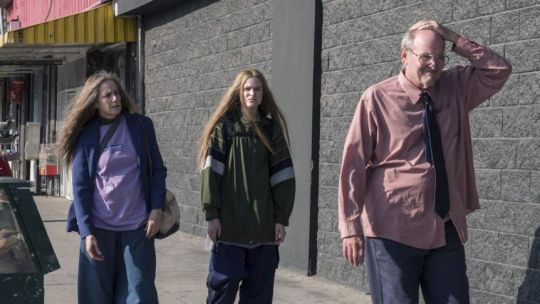
Quirky filmmaker Miranda July is back with her first feature in nearly a decade. Kajillionaire is a bizarre but captivating tale about a family of criminal grifters and how the daughter reevaluates her strained relationship with her parents after an outsider is welcomed into the fold. Evan Rachel Wood takes what could have easily been dismissed as a goofy caricature in Old Dolio (yes, that’s her name) and turns into a heartfelt portrayal of a woman whose lifestyle of freeloading dictated by her parents (played by Debra Winger and Richard Jenkins) becomes her own crisis. In many ways, Kajillionaire feels like a fantasy that keeps people asking, “What on earth is going on?” And this time, it’s for the best.
24. Freaky

Revamping decades-old plots like the body-swapping antics from Freaky Friday can either result in a predictable failure or a surprising success. Thankfully, Freaky falls into the latter category. In this horror comedy, a deranged serial killer (played by Vince Vaughn) swaps bodies with his victim, a timid teen girl (played by Kathryn Newton). What makes the film work though are the dedicated lead performances, particularly by Vaughn, who is pretty convincing as young girl trapped in a grown man’s body. With a few good laughs and decent thrills, Freaky is worth the watch.
23. The Outpost
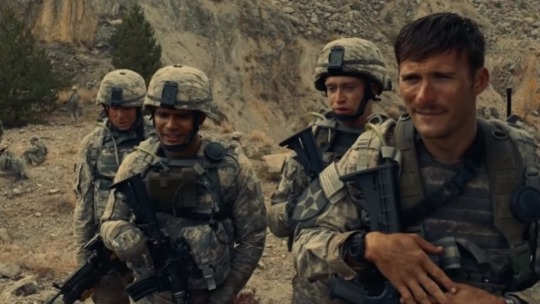
The Outpost is an intense film about the real-life story of small group of US troops isolated by surrounding mountains in Afghanistan, under the constant threat of the Taliban, which ultimately comes to a head in the Battle of Kamdesh. The film captures the harrowing experiences of these soldiers with heart-pounding action sequences, which are fueled by a solid cast including Scott Eastwood, Caleb Landry Jones, and Orlando Bloom.
22. Uncle Frank
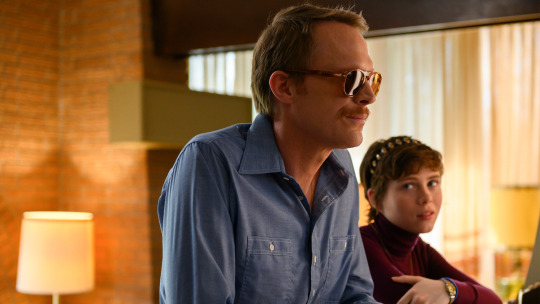
Paul Bettany may be best known for playing The Vision in the Marvel Cinematic Universe, but he should be celebrated as his title character in Uncle Frank, a touching dramedy set in 1973 about an NYU professor who returns home to his estranged family for his father’s funeral while his niece, played by rising star Sophia Lillis, idolizes him for teaching her to be her authentic self while he keeps his sexuality a secret. Bettany brilliantly balances the coolness of his stature with the internal agony that ultimately hits a boiling point, which is counterbalanced by Peter Macdissi’s fun performance as Frank’s happy-go-lucky lover who accompanies him back home despite his wishes.
21. Hillbilly Elegy
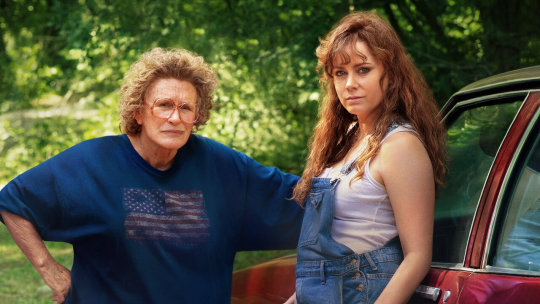
Hillbilly Elegy was panned by critics over politics that had absolutely no role the film. Based on the best-selling memoir by J.D. Vance, the newest feature from Ron Howard shows the journey of a boy who despite all odds growing up in a poor family that constantly struggled with abuse and addition managed to get into Yale Law School and achieve the American dream. While both Gabriel Basso and Owen Asztalos hold the film together as the younger and older Vance in the present and flashback scenes, Amy Adams as the impulsive, irresponsible mother and an unrecognizable Glenn Close as the no-nonsense inspiring grandmother that turn Hillbilly Elegy into an acting tour de force.
20. The Trial of the Chicago 7

Oscar-winning screenwriter Aaron Sorkin sits in the director’s chair once again in this courtroom drama about the real-life protesters who showed up in Chicago during the 1968 Democratic National Convention. With themes that resonate today, The Trial of the Chicago 7 benefits from its sharp screenplay, well-paced editing, and an outstanding ensemble cast that includes Eddie Redmayne, Mark Rylance, Yahoo Abdul-Mateen II, Sacha Baron Cohen, Jeremy Strong, Frank Langella, Joseph Gordon-Levitt, and Michael Keaton.
19. Yellow Rose
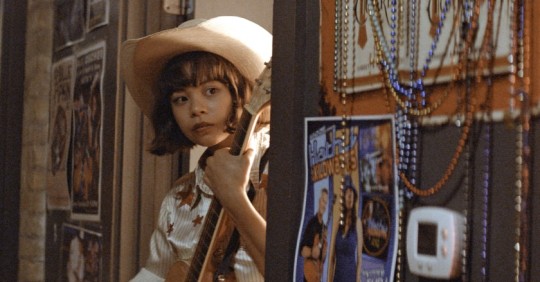
Broadway actress Eva Noblezada makes her film debut as an aspiring country singer on the run after her mother, an illegal immigrant, is obtained for deportation. Yellow Rose presents a nuanced depiction of US immigration, but at the heart of it is a heartbreaking story of a young woman who struggles between putting her family or her dreams first. Between Noblezada’s powerful performance and solid original music, Yellow Rose hits all the right chords.
18. Palm Springs

Move over, Groundhog Day. While the Bill Murray classic has largely monopolized the time loop film genre, Palm Springs gives it a run for its money. Andy Sandberg and Cristin Milioti star as the unlikely duo who are stranded reliving the same dreaded wedding day involving mutual acquaintances and their desperate efforts to escape the seemingly inescapable. The Hulu comedy stands on its own two feet for the good laughs, the chemistry between the two leads, and the film’s emotionally-grounded plot.
17. Let Him Go

Kevin Costner and Diane Lane reunite on the big screen after playing farmer parents in Man of Steel to rancher grandparents in Let Him Go, although this time they are able to display their full acting chops. In this period dramatic thriller, they set out to find their only grandchild following the death of their son only to discover that the widowed daughter-in-law remarried into an infamous crime family. While both Costner and Lane tug at the heartstrings, it’s Lesley Manville, who plays the ruthless matriarch of the family, that really takes command of the screen. Ultimately, Let Him Go is all about family and the lengths one is willing to go to protect it.
16. Unhinged

In a year plagued by the pandemic, Unhinged led the way to the revival of movie theaters back in August and perhaps in some ways it was meant to be the film to do so as the themes of a rage-fueled society and the lack of human connection carry weight. Russell Crowe stars, as the title suggests, as an unhinged psychopath whose road rage torments a woman and her adolescent son. Unhinged is the epitome of pure entertainment and is why we go to the movies. While it’s not quite the most sophisticated thriller of the year, it’s still one helluva ride.
15. Emma

Anya Taylor-Joy has had quite the year with both highs (The Queen’s Gambit) and lows (The New Mutants). But it began before the pandemic with the release of Emma, which she stars as the iconic Jane Austen title character, a socialite who meddles in the love life of others while refusing to acknowledge her own shortcomings in that department. Supported with a strong ensemble cast, beautiful production design, and comedic charm, Emma is not to be missed.
14. The Invisible Man

ln the era of remakes and reboots, very few are as good as Universal’s latest monster flick revival of The Invisible Man. Elisabeth Moss stars as a woman who believes she’s being haunted by her abusive ex-husband, someone she becomes convinced faked his own death and is stalking her without being able to be seen. Filmmaker Leigh Whannell, the writer behind the Saw and Insidious horror franchises, generates good thrills and high-wire tension with the help of high production value and a terrifyingly-good performance from Moss.
13. Dick Johnson is Dead

Documentarian Kirsten Johnson filmed a beautiful, intimate tribute to her father Dick Johnson, who has been suffering from Alzheimer's in the final years of his life. However, instead of dreading his death, both daughter and father embrace it by having him acting out several scenes of his over-the-top demises. Dick Johnson is Dead may focus on the subject manner of death, but this documentary actually celebrates life and the laughs that happen along the way.
12. The Wolf of Snow Hollow
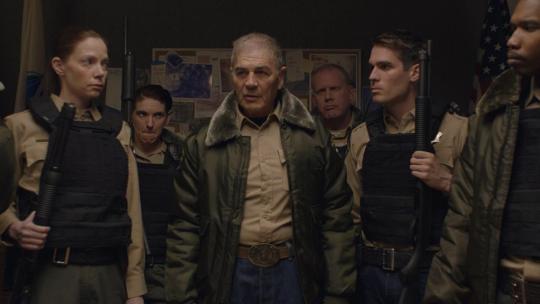
Perhaps one of the littlest-known films of the year, The Wolf of Snow Hollow is not your conventional indie comedy horror flick. Writer/director Jim Cummings stars as an overly-heated police officer who attempts to get to the bottom of a string of murders in his small, snowy Utah town by what appears to be some sort of werewolf, though he remains unconvinced. Featuring one of the final performances from veteran actor Robert Forster, The Wolf of Snow Hollow uses its quirky sense of humor to stand out from the rest of the pack.
11. The Gentlemen

The Gentlemen is a fun, action-packed, crime caper from Guy Ritchie about the London turf war of drug kingpins. Matthew McConaughey, Charlie Hunnam, Henry Goulding, Michelle Dockery, and Colin Ferrell all round out the strong cast, but its Hugh Grant that really steals the show as the comedically manipulative Fletcher, whose only allegiance is to himself. If you like a stylish film with well-choreographed violence and a fast-paced plot, The Gentlemen should be your cup of tea.
10. Ma Rainey’s Black Bottom

Some of the best play-to-film adaptations are the films that feel like you’re watching a play, and Ma Rainey’s Black Bottom is one of them. Produced by Denzel Washington, Viola Davis gives a transformative performance as Ma Rainey, known as the “mother of the blues” and the clash she had with a pair of White music producers, but she also butts heads with her trumpet player (played by the late Chadwick Boseman), who also has his own music ambitions. While Davis obviously gives other Oscar-worthy performance, it was Boseman who was able to show how incredibly gifted he was as an actor. And while the world lost him far too soon, at least his last role ended up being his greatest.
9. The Kid Detective
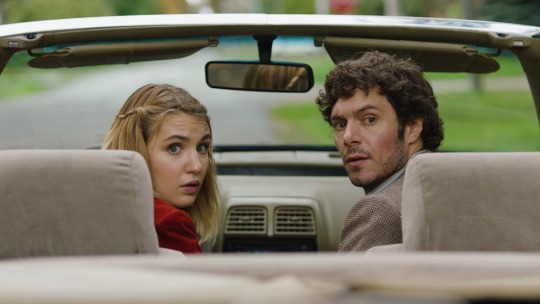
One of the biggest surprises of the year was how good a movie starring and produced by Adam Brody was. Brody plays a washed up former kid detective who attempts to revive his once-celebrated career of solving mysteries by getting to the bottom of a murder in his hometown. The Kid Detective is a brilliant dark comedy from newcomer writer/director Evan Morgan with good laughs, plenty of plot twists, and a career-best performance from Brody, who proves he’s more than just the pretty face from The O.C. we all know him as.
8. Mank
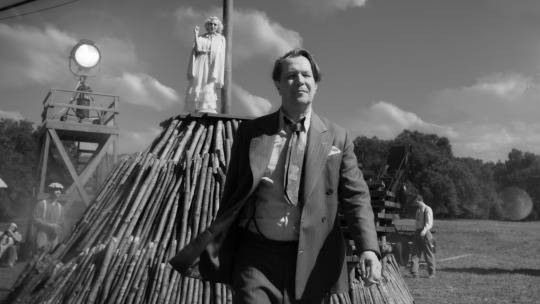
Citizen Kane is widely regarded as one of the greatest films ever made and Mank is a worthy tribute. Gary Oldman stars as the title character Herman “Mank” Mankiewicz, the Oscar-winning screenwriter behind the iconic film. David Fincher (The Social Network, Gone Girl) managed to capture the epic scale of the 1941 classic that would make Orson Welles proud.
7. Soul
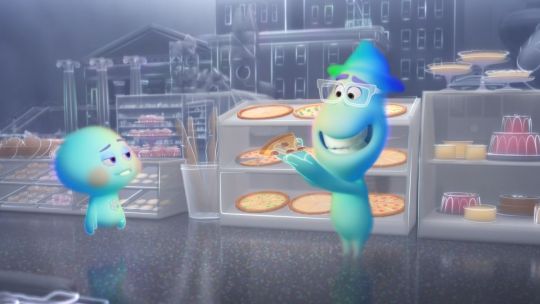
Soul is one of those rare existential Pixar films that goes beyond being children’s entertainment. Following in the footsteps of 2015′s Inside Out, Soul depicts what happens to the soul of a jazz musician who’s convinced his time on Earth isn’t over. While the universe created to explain how souls work and the plot that went along with it falls short of its emotions predecessor, Soul is still high-caliber among Pixar films and a great movie for both kids and adults alike.
6. Another Round

Perhaps the greatest work from Swedish director Thomas Vinterberg to date, Another Round follows four unsatisfied middle aged men who decide to take a theory of task from a Norwegian psychiatrist, who concluded that maintaining a blood alcohol level of 0.050 will enhance their mental and psychological state. Mads Mikkelsen, who’s best known to American audiences as Hannibal Lecter in the short-lived NBC series Hannibal and the Bond villain in Casino Royale, offers a strong, nuanced performance as one of the four educators who embraces this drinking challenge in a film that provides an equal balance of chuckles, cringes, and emotional gut punches.
5. I’m Thinking of Ending Things

From the crazy mastermind of Charlie Kaufman, the writer behind Being John Malkovich, Eternal Sunshine of the Spotless Mind, and Anomalisa, his latest on Netflix is too a mind-bender. I’m Thinking of Ending Things is a surreal, zany, and at times disturbing examination of the human condition as the nameless female protagonist played by an incredible Jessie Buckley mulls over breaking up with her boyfriend (played by Jesse Plemons) while visiting his parents’ house. Accompanied with a stellar production design and a crazy-good performance from Toni Collette as “Mother,” Kaufman newest cerebral feature lives up to his iconic reputation of filmmaking.
4. Da 5 Bloods

Spike Lee is one of the few genius filmmakers who is able to blend multiple genres together and his latest film is no different. Da 5 Bloods is an action adventure, buddy comedy, dramatic character study, and war movie all wrapped up into one about a group of Vietnam War veterans who return to the former battlegrounds to find the remains of one of their fallen soldiers as well as some treasure that they kept hidden years ago. With a strong ensemble cast that includes the late Chadwick Boseman, its longtime character actor Delroy Lindo who steals the show with his powerful performance. Da 5 Bloods is easily one of Netflix’s strongest films to date.
3. The Assistant
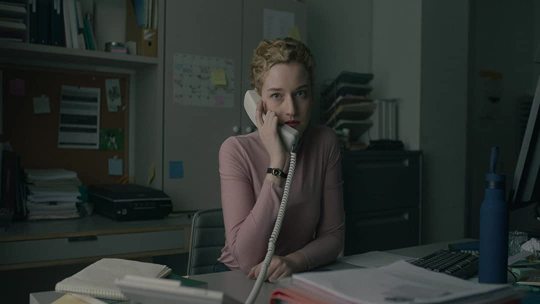
One of the first #MeToo-era films, The Assistant offers the day in the life of a low-level female staffer of a production company who is haunted by the presence of her Harvey Weinstein-like boss (who never actually appears in the film). However, rather than depicting the dramatics of sexual misconduct, The Assistant uses the common subtleties and nuances of the workplace yet maintains the same tension and heartbreak. Anchored by the remarkable, devastating performance by up-and-comer Julia Garner (Ozark), The Assistant is as important as it is well-done.
2. Sound of Metal
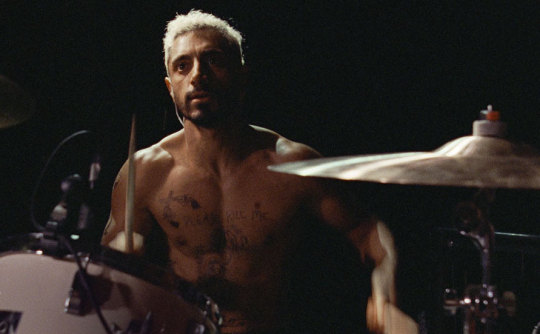
Riz Ahmed gives the performance of his career as a heavy metal drummer and former addict whose sudden battle with going deaf upends his life. Sound of Metal is an incredible experience that gives a rare glimpse in the American deaf community which is enhanced by the remarkable sound design that helps the audience actually hear what the musician is going through. It’s truly one of the most rewarding films of the year.
1. The Climb

The Climb takes the generic “man sleeps with his best friend’s fiancé” storyline and turns it on its head. In his feature debut as writer and director, Michael Angelo Covino leads as the not-so-apologetic adulterer Mike and Kyle Marvin, who co-wrote the film, is the good-hearted Kyle who struggles to whether or not to forgive his best friend’s ultimately betrayal. Not only is The Climb is quirky and hilariously written, it’s a remarkably well-made comedy with some of the year’s best cinematography. Between a strong cast, a superb screenplay, and the extremely-high production value, The Climb is at the top of the mountain of 2020′s best films.
#The Climb#2020#Soul#riz ahmed#kajillionaire#Da 5 Bloods#Spike Lee#Pixar#I’m Thinking of Ending Things#jessie buckley#The Kid Detective#Adam Brody#Emma#The Queen's Gambit#Unhinged#Elisabeth Moss#Palm Springs#Netflix#ma rainey's black bottom#Chadwick Boseman#viola davis#Uncle Frank#Yellow Rose#Eddie Redmayne#joseph gordon-levitt#Hillbilly Elegy#Amy Adams#Glenn Close#Matthew McConaughey#Jamie Foxx
434 notes
·
View notes
Text
Short Reflection: Spring 2021 Anime
Folks, I think it’s official: anime is too good nowadays. There’s so much good stuff coming out all at once that it’s impossible to keep up with it all. I watched more good anime in spring 2021 than I watched total anime in some previous seasons, and even then I know I missed out on a few gems like Odd Taxi, Super Cub, and Fairy Ranmaru. My brain is still spinning from trying to keep track of it all. And I’ll bet you missed a few gems as well. With all this good anime to watch, some shows you might enjoy were bound to slip through the cracks. That’s why I’m here: to tell you about all the anime I watched last season and let you know which ones are most worth your time. Life’s too short to waste watching mediocre shows that will only let you down. So kick back, relax, and listen to me ramble about my anime experience in Spring 2021. Chances are, you’ll find one or two shows you missed out on that you’ll really enjoy

To Your Eternity: Unfinished/10
Was there ever any doubt that To Your Eternity was gonna be one of the season’s biggest hits? A ruminative long-form fantasy story from the author of A Silent Voice, this tale of a shapeshifting immortal being’s journey through life bleeds prestige cry-porn goodness from every available orifice. If anything, I’m surprised I’m not liking it more. This kind of shit should leave me bawling my eyes out on the regular, but TYE’s only really gotten the waterworks flowing twice so far. Maybe the somewhat limited animation isn’t doing a good enough job selling those hard-hitting feels. Maybe the direction and editing isn’t as strong as it needs to be to capture the true majestic beauty of this world. Maybe it’s just on a very slow burn and is still putting the pieces in place for incredible things to come. Whatever the case, watching this mysterious blank slate of a being slowly learn what it means to live as he experiences happiness, sorrow, and everything in between is still compelling as hell, and I can’t wait to see how the show develops in its second half. Perfect or not, something tells me we’ll be talking about To Your Eternity for quite some time to come.

How Not to Summon a Demon Lord Omega: 1.5/10
You know, the first season of How Not to Summon a Demon Lord wasn’t really that bad. Yes, it was a cringey ecchi isekai power fantasy with all the lazy, pandering baggage that entails, but at least it had its moments. So imagine my horror when I realized the second season was leaving Ajia-Do’s production house and would instead be picked up by Tezuka Productions, a.k.a. where adaptations go to die. Folks, this anime is a fucking disgrace. The animation and art design are butt-ugly all around, what little personality Diablo’s harem once had has been replaced with mindlessly sucking the self-insert protagonist’s dick (almost literally, at times), and the few new characters are uniformly stupid, annoying, and aggravating, often all at once. There is no effort on display here beyond cranking out a heap of lowest-common-denominator garbage for basement dwellers to masturbate over and make the producers rich from lewd figurine sales. And without the first season’s genuine desire to try, there’s nothing left to distract from what a miserable, empty, offensively bad series this has always been at its core. This is bad fantasy, bad isekai, bad ecchi, and completely devoid of value unless you enjoy jerking off to off-model softcore rape hentai. Forget How Not to Summon a Demon Lord, this show’s name should really be How Not to Make an Even Halfway Decent Anime.
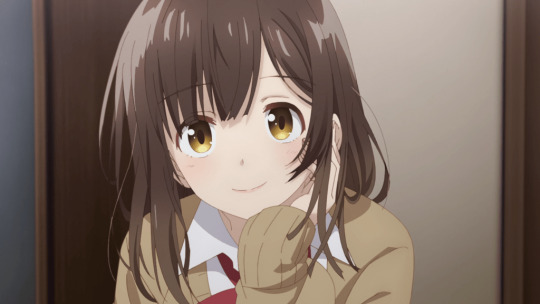
Higehiro: 2.5/10
I’ll give Higehiro this, it’s not every day a show pisses me off in so many ways that I’m not sure what I should be pissed off at the most. At first, I thought it would suck because it was a creepy age-gap romance between a high school girl and a salaryman. Then I thought it would suck because of its blatant hypocrisy in trying to play a teenage girl sleeping with older men for the tragedy it realistically would be... while still objectifying and leering at Sayu at every opportunity. Then I thought it would suck by devolving into a cringey harem comedy starring yet another World’s Nicest Guy who attracts all the girls in his immediate vicinity. Then I thought it would suck because it makes Sayu instantly forgive a man who tries to rape her, and that man is let off the hook with no consequences. Then I thought it would suck because of the cheap, maudlin melodrama that makes Sayu’s tragic backstory impossible to take seriously. Then I thought it would suck because of the abuse apologism in the final act and the toxic notion that only your blood parents can be your true parents and you should forgive them even if they smack you around. In the end, though, there’s no one reason why Higehiro is such a steaming pile of trash. It’s just garbage from start to finish, and the fact it thinks it’s telling a serious story about serious issues only makes it all the more insufferable.
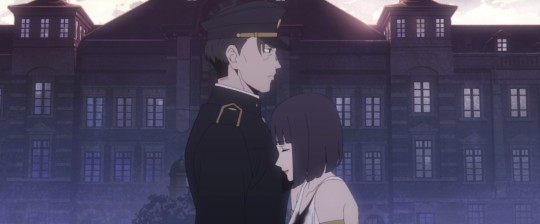
Mars Red: 3.5/10
I still don’t quite know what to make of Mars Red. Is it pretentious? Brilliant? Stupid? Insightful? Phony? Clever? Confused? Does its artsy, capital-M Meaningful aesthetic just exist to paper over bad writing, or is it genuinely smart and just went way over my head? I’m willing to hear arguments from both sides, because I’m genuinely not sure. All I’m sure of is that the emotion Mars Red most instilled in me was boredom. The longer it went on, the more I could feel my attention slipping, to the point I’d fully stopped trying to care about who was doing what and why. Give me trash, give me trainwrecks, give me challenges, but at least make them interesting to watch. For all its lofty ambitions, all this show accomplished was leaving me cold and disinterested. And if I can describe a period steampunk vampire spy anime with heightened cinematic/theatrical presentation as boring, then something has gone terribly, terribly wrong.

So I’m a Spider, So What?: 4/10
I so desperately wish I could like So I’m a Spider, So What? Aoi Yuuki is pitch-perfect as the motormouthed title character, her 3D model and the way it’s animated is genuinely impressive, and this is one of the few isekai that’s actually got interesting lore behind the whole “transported to another world” gimmick. In a market oversaturated with garbage isekai, Spider could have been a real breath of fresh air. Unfortunately, this anime is doomed by one simple fact: it’s directed by Shin Atagaki at Millepensee Studios, a.k.a. the combination of creative forces that gave us Berserk 2016. And yes, those PTSD flashbacks you just experienced are sadly justified. Terrible animation in 3D and 2D alike, not to mention some of the worst incorporation of hand-drawn and CG animation I’ve ever seen. Incomprehensible direction that renders countless scenes impossible to follow and rips the heart out of every potentially emotional moment. Moments of animation so shockingly bad you wonder how any human being thought this was acceptable as a finished product. Not to mention the entertaining spider story is superglued onto a parallel human story that’s every bit as generic, lifeless, and agonizingly dull as Every Other Isekai in the History of Ever. And the collision of all these factors is a final stretch that takes whatever charm the show once had and shoves it through a meat grinder. My advice? Stick with the light novels: I’ve heard they’re miles better in every conceivable way.

Those Snow White Notes: 5/10
As an animated showcase of the art of shamisen playing, Those Snow White Notes is just about perfect. Every single performance is lavishly animated, directed to a mirror’s shine, awash in striking symbolism, distinct from every other performance with its own unique personality, and hits harder than a ten-gallon freight truck barreling down the expressway at 100 miles per hour. Whenever this show just lets its characters express themselves through their instruments, often with more than one lengthy performance per episode, it’s easily one of the best anime of the season. So it’s a crying shame that the story threading these awe-inspiring moments together is such a melodramatic mess. The characters are overwrought, it whiplashes between comedy and drama with so little grace it’s bound to give you a headache, and it presents every conflict, no matter how small-scale, like it’s fucking Wagner. It tries to bludgeon you into submission with overbearing piano tracks and maudlin voice-acting, but all that accomplishes is making the whole affair feel even more artificial and shallow. Such incredible performances deserve to be in a story that’s just as breathtaking, and sadly, Those Snow White Notes just doesn’t work whenever it has to put the shamisen down.

I’ve Been Killing Slimes for 300 Years and Maxed Out My Level: 5.5/10
The nicest thing I can say about the latest absurdly titled isekai du jour is that it’s harmless enough. It’s pure moe slice of life centered around Aoi Yuuki as an overworked office worker who gets reincarnated as an immortal seventeen-year-old witch and gets to spend the rest of eternity living a slow, relaxing life in your standard-issue fantasy world. Along the way, a quirky family of oddball fantasy creatures with human forms grows around her, all of whom basically just exist for a couple kinds of jokes and some light yuribaiting that never goes anywhere. There’s a good idea buried in here about Yuuki’s character helping everyone around her learn to relax and take it easy; since she died of overwork, she’s determined not to let her second life become buried in stress as well, and she ends up teaching a lot of the supporting cast how to do the same. If that idea had been more of the focus, I think this could have been a really good show with something powerful to say about how you shouldn’t value work more than your health and well-being . Alas, it’s content to wander aimlessly through one mildly entertaining episodic lark after another, never falling apart but never really leaving an impact either. It’s harmless enough that I don’t regret watching it, but I know for a fact I’ll barely remember it in a week’s time now that it’s over.
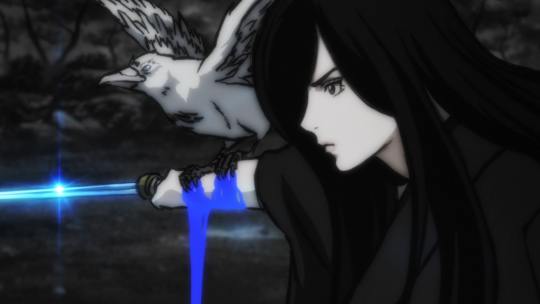
Joran the Princess of Snow and Blood: 5.5/10
Is it possible for a show to be both incredible and terrible? I don’t mean just having good and bad elements, I mean the elements themselves and the complete package they form are simultaneously good and bad at the same time? Because that’s the only way I can describe Joran. The plot is a complete mess and at times offensively stupid, yet it also tells a coherent, engaging narrative about spies and skullduggery in a steampunk, supernatural 1930s Japan. The characters are underwritten and cliche to the point of obnoxiousness, but their arcs are littered with powerful emotional moments. I can groan at the laughably amateurish contrivances in the storytelling one moment and then genuinely get invested in the protagonist’s inner turmoil the next. I can roll my eyes at how sloppily that inner turmoil is handled one moment and then root for her as she fights against the sins of the past the next. There so many good ideas that are bludgeoned to death by sloppy execution, so many bad ideas that somehow work in spite of themselves, and it’s all wrapped up in production values that constantly fluctuate between cool stylish flair and just plain ugly. Is this show good? Bad? Somewhere in between? Who can say? All I know for sure is I could never take my eyes off it, and that alone might make it worth a look.

The Way of the Househusband: 6/10
Let’s get one thing straight: this anime looks like shit. Some producer at JC Staff decided the best way to adapt a hilarious comedy manga was to literally just make it look like a moving manga, and they deserve all of the blame for how terrible it looks. So consider it a testament to the inherent strength of The Way of the Househusband that despite everything, it’s still entertaining in this form. What’s not to love about a badass former yakuza who tackles his new life as a loving stay-at-home husband with the same gusto and grit he once gave to his days of crime? Not only is that premise hilarious, the sincerity with which Tatsu embraces his domestic duties makes for a genuinely lovable rejection of toxic masculinity. He’s a grizzled ex-murderer who fucking loves his wife and doesn’t care who knows it, and I just think that’s great. Still, it’s two people who really save this anime: director Chikai Kon, who’s made a bit of a career out of salvaging trashfire productions (the original Higurashi comes to mind), and the absolute pitch-perfect casting of Kenjiro Tsuda in the main role. I genuinely don’t know if there’s ever been a seiyuu more perfectly suited for a character as Tsuda is for Tatsu, and his gravely, intense, perfectly over-the-top performance carries this entire damn show on its back. God bless this ridiculous ham.

Don’t Toy With Me, Nagatoro-San: 6/10
In the pantheon of shows about teasing girls who mercilessly torment the guys they’re in love with, Nagatoro-san is firmly in the middle. It’s nowhere near as rich and beautiful as Takagi-san, but it’s head and shoulders above the puerile garbage that was Uzaki-chan. There’s some fun banter between Nagatoro and her easily flustered senpai, and I’ll be damned if their slow-burn romantic development doesn’t actually kinda work. Yes, it’s still ultimately a fetish show for guys who want to be bullied by a super-hot tanned high school kouhai, and there’s plenty of eye-rolling contrivances to force the fanservice angle along the way. But at least it delivers on that premise well, with some actually good jokes and some genuinely strong production values to sell the absurdity of Nagatoro’s many meme-able faces. You should still absolutely watch Takagi-san before this one, because it’s superior in every way, but I definitely enjoyed my time being toyed with. Just be aware that the first episode is way more extreme than the rest of the show. Like, Nagatoro’s teasing at the start is outright mean-spirited bullying. Thankfully, the show almost instantly settles into more tame patterns by the second episode, but it’s still a really bad first impression. Power through that stumbling block to get to the good stuff, and I think you’ll have a decent enough time.

SSSS.Dynazenon: 6.5/10
I was slow to warm up to Gridman when it first aired. I felt it spent way too long playing coy with its own premise and only really got good once it actually got to the point. Thankfully, it seems like the creators learned their lesson, and this new pseudo-sequel/spinoff/side-story, Dynazenon, is engaging from start to finish. The entire cast is memorable instead of just a few key players, and everyone’s got interesting emotional struggles that drive the human drama behind the big tokusatsu-kaiju smackdowns. As a result, it’s clear from the outset what Dynazenon is trying to be: a story about broken people pulling themselves out of the pits they’re stuck in, finding strength together to overcome what’s holding them back and stand on their own two feet. So instead of waiting impatiently for the show to reveal its hand, I can just sit back, relax, and enjoy the unique blend of bombastic Trigger-branded toku action and subdued, Evangelion-esque character beats that makes this franchise so fascinating. Unfortunately, while Dynazenon is more consistent than Gridman, I don’t think it ever quite reaches Gridman’s heights. Let’s be real, Akane Shinjo fucking carried Gridman, and no one in Dynazenon is quite as absorbing and compelling as her. Can’t win ‘em all, I guess.
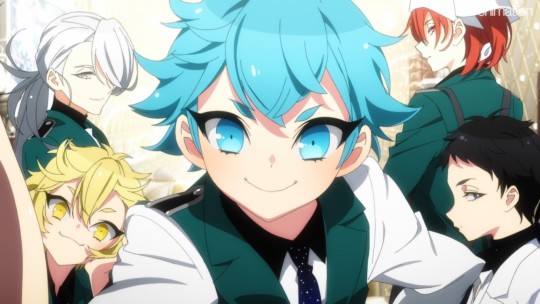
Pretty Boy Detective Club: 7/10
Does the phrase “Monogatari by way of Ouran High School Host Club” make you salivate at the mouth? Then you absolutely need to check out Pretty Boy Detective Club. Once again, Studio Shaft brings the eclectic writing of Nisioisin to life with the most bonkers, experimental animation sensibilities you’ll see all year, telling the story of a lone girl who finds herself entangled with the titular club of bishounen super-sleuths and the absolutely buckwild mysteries they set about trying to solve. Honestly, though, PBDC is less a mystery anime than it is a celebration of beauty in all its forms. Aesthetic beauty, emotional beauty, living beautifully, all the things and actions and ideas that make life that much more interesting and exciting. It’s probably the most direct expression of Nisi’s sensibilities as a writer yet, a story about embracing the abnormal and absurd and celebrating what makes life batshit crazy. After all, isn’t it far more beautiful to live freely and unusually than stay inside the confines of normalcy? And PBDC embraces that philosophy in storytelling, character writing and animation alike, resulting in one of the most memorable anime you’re likely to watch all year. Don’t expect compelling character arcs or nuanced drama here, but if you can vibe with its outrageous spirit, I cannot overstate how much fun you’ll have.

Shadows House: 7/10
Listen, I know we’re all righteously pissed at Cloverworks right now for screwing over so many of its productions. But if you’re still hungry for a good old twisty-turny puzzle-box mystery shonen after The Promised Neverland’s second season let you down, then Shadows House should be right up your alley. It’s a slow burn that takes a bit to really get going, but once it clicks into place, it’s one of the most uniquely mesmerizing anime of the season. The fantastical Victorian setting is deliciously gothic, the way the show teases out the greater secrets of the mansion makes for some incredible twists and turns, and it’s all anchored by a lovably sapphic relationship between Kate, the young mistress of the mysterious Shadow Family, and Emilico, the ditzy living doll who’s assigned to serve as her face. This show is very pro-clonecest, and honestly, I can’t help but love that. Plus, you gotta appreciate any story with the balls to make its first big arc a giant escape room puzzle, let alone pull it off this well. There’s still clearly a lot of story left to tell, and I hope the rest of the manga gets adapted eventually; something tells me Shadows House is only gonna get more and more exciting from here. But until then, this first season is still well worth checking out.
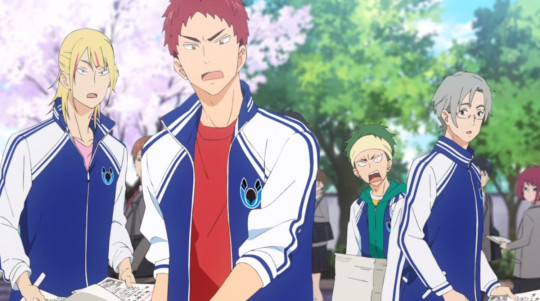
Backflip: 7/10
Backflip is as simple a sports anime as you can imagine. A fresh-faced high schooler falls in love with men’s rhythm gymnastics after seeing the school team perform, and the show follows his journey as he joins the team and learns how to soar like a real acrobat alongside a cast of colorful clubmates. There’s no unique twist or striking emotional wrinkle, it’s just a straightforward, inspirational yarn about handsome sports boys doing handsome sports things. So why did I rate it so high? Because the production is fucking amazing. Stellar CG animation during the performances, equally lively and impressive character animation during downtime, A-tier direction that makes all the formulaic beats sing with new life, and a consistent attentional to detail in even the smallest, most subtle moments. The animators at studio Zexcs clearly loved working on this show, and their obvious passion and talent brings Backflip’s simple story to life beautifully. It’s not gonna re-invent the wheel, but if you’re in the mood for the best kind of comfort food anime, I cannot recommend it highly enough.

Zombieland Saga Revenge: 7/10
To this day, Zombieland Saga remains one of the weirdest series I’ve ever tried to wrap my head around. Whenever it’s trying to be a straightforward idol anime, it can feel as lifeless as the dancing, singing corpses at its core. But whenever it’s doing literally anything else? It’s one of the most inventive, surprising, entertaining, kooky, and all-around unique franchises in all of anime. And its second season, subtitled Revenge, ably carries on that tradition. All the episodes dedicated to Franchouchou doing normal idol stuff slipped in and out of my brain without leaving any sort of impact; I barely even remember Junko and Ai’s second two-parter. No, the parts of this show that stick in my mind are the parts like Saki looking up to a ridiculously pompadour’d radio DJ. Or The Legendary Tae Yamada winning a dance competition. Or Yugiri’s backstory (finally!), which fills us in on the deep lore behind the mission to save Saga. Or Mamoru Miyano going absolutely apeshit as Tatsumi Kotaro once again. Whenever ZLS is marching to the beat of its own eclectic drum, there’s really nothing else like it. And while this season is more uneven than the first, it all leads to a finale that’s probably the best episode of the entire show thus far, climaxing in the first genuinely great straightforward idol stuff of the franchise and an absolutely gobsmacking post-credits scene that’s left me more excited than ever to see where this franchise goes from here. Zombieland Saga is one very odd duck, but I’ll be damned if it doesn’t know how to keep me coming back for more.
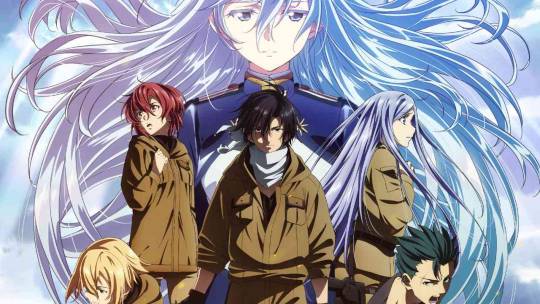
86 Eighty-Six: 8/10
Rejoice, everyone: we finally have a genuinely great modern mecha franchise! And somehow, it comes in the form of a light novel adaptation by A-1 Pictures. There is no universe where that combination should make sense. And yet, 86 Eighty-Six genuinely is that great. Set in a false utopian future society called Alba where all non-blood-pure citizens are sent off to fight and die in a far-off war, it tells the story of Lena, an Alban commander who dares to try and stand up to this inhuman system, and the squad of officially “unmanned” drones- which are actually manned by those non-blood-pure citizens- she finds herself in command of. It’s a brutal exploration not just of the horrors of war and eugenics, but how even the most well-meaning of us can be blinded to those horrors by our privilege, and how difficult it truly is to defeat an oppressive system that’s so much more powerful than any one person could ever be. On top of that, it’s got great production values, spectacular direction, surprisingly excellent CG mecha action, and yet another banger soundtrack from Hiroyuki Sawano. There’s a clever narrative gimmick where episodes split cleanly in two, spending one half solely in the perspective of Lena in the Alban capital and the other half solely in the perspective of her squad out on the frontier, providing double the insight on the ongoing plot without ever feeling redundant. It’s still got a little annoying holdover from overplayed LN tropes, but the obvious passion and talent from everyone involved makes them much easier to stomach. Bottom line, 86 is one hell of a great show, and I can’t wait for the upcoming second cours to hopefully push it even higher.
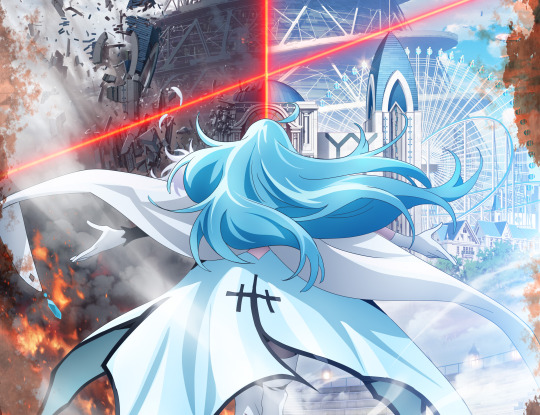
Vivy Fluorite Eyes’ Song: 9/10
What do you get when you cross the spectacular production values of Studio WIT, a tightly-plotted script from Re:Zero author Tappei Nagatsuki, and a gripping sci-fi story exploring what it means for a robot to become human? Answer: you get far and away the best anime of Spring 2021. Vivy Fluorite Eyes’ Song is a goddamn triumph, the kind of effortlessly confident, wholly unique, endlessly gripping roller coaster ride that only the best of anime can provide. Set in a near future where robotic AIs are becoming an increasingly integral part of human society, an amateur songstress AI named Diva is recruited by a far more advanced AI from the future to stop some unknown catastrophe from causing AIs as a whole from destroying humankind. But as she works to change the course of history, her interactions with rapidly advancing AI technology force her to question her purpose, her autonomy, her capacity for evolution, and what it truly means to put your heart into something. It’s perhaps a bit too ambitious for its own good, and a second cours might have helped flesh out the setting in a more satisfying manner (as well as give more space to a somewhat rickety final arc). But all of its minor stumbles are overwritten ten times over by the sheer brilliance of its century-spanning story, the adrenaline-fueled insanity of its action scenes, and it’s beautiful, forward-thinking thesis on our relationship to technology and where the line truly lies between man and machine. Epic, exciting, poetic, and at times even transcendent, Vivy Fluorite Eyes’ Song is an instant classic you’re sure to remember for many long years to come.
#anime#the anime binge-watcher#tabw#spring 2021 sr#spring 2021 anime#spring 2021#86 eighty six#vivy: fluorite eye's song#vivy#to your eternity#fumetsu no anata e#bakuten#backflip!!#how not to summon a demon lord#hige wo soru. soshite joshikousei wo hirou#higehiro#mars red#so i'm a spider so what#kumo desu ga nani ka#shadows house#zombieland saga#pretty boy detective club#bishounen tandeidan#ssss.dynazenon#don’t toy with me miss nagatoro#ijiranaide nagatoro san#the way of the house husband#those snow white notes#i've been killing slimes for 300 years and maxed out my level#joran the princess of snow and blood
35 notes
·
View notes
Text
What’s the difference between a pulp hero and a super hero?

There is a common sentiment when discussing pulp heroes, when compared to superheroes, that positions the two as if they were separate by entire eras, with pulp heroes being as distinct from the superheroes as the dinosaurs are to mankind. But then again, the dinosaurs never really went away, did they?
Oh sure, they endured a great extinction, they downsized and ceded their thrones to the tiny little rats that scurried in their shadow, who then grew to become just as big, and then even bigger, but they never went away. They simply adapted into new forms and formed new ecosystems. We call them birds now.
The gap between Superman and The Shadow is merely 6 years, hardly much of a generation. There are those that argue that the Marvel and DC universes still have pulp heroes, that Batman is (or was) one, that characters like The Question and Moon Knight carry on the tradition. We have characters like Hellboy, Grendel, Tom Strong and Zack Overkill as original, modern examples of pulp characters, strongly identified as such. Venture Bros had in 2016 the best modern take on the Green Hornet. Lavender Jack is still going strong. So the idea that pulp heroes are defined solely by being old and outdated isn’t exactly true, when clearly there’s still enough gas in the tank centuries later for stories with them to be told.
Is there any meaningful distinction between pulp heroes and superheroes? If not, can we identify one?
Costume is definitely a big part of it, as Grant Morrison famously argued in his own summation. Of what he considers the big difference between the two:
“What makes the superhero more current is the performance aspect. That's what The Shadow and those other guys don't really have. Their costumes are not bright, and they don't have their initials on their chest, and everything isn't out front and popping like the superheroes. I think we can relate to that about them because in the world we live in, everyone has a constant need to be a star. I think superheroes are keyed into that parallelism. They're performers. They're rock stars, and they always have been.
And he’s right, to an extent. It’s definitely tied into the central differences between The Shadow and Batman, as I’ve elaborated. While The Shadow was far, far from the only type of pulp hero, the superhero’s costume has long been defined as THE thing that sets it apart from every other type of fictional character. At least, when it comes to American superheroes.
Because the “criteria” for superheroes is nowhere near as set in stone as some would like to believe. Our basic definition of superheroes is based around comparisons and contrasts to Superman and Batman, and how they fit into what we call “the superhero genre”. The existence of a superhero genre is, in and of itself, debatable, and any working definition for superheroes is inevitably going to have too many exceptions.
Superheroes are not defined by settings, like cowboys or spacemen, or their profession, like detectives. They can’t be defined by superpowers (Batman), a mission statement, having secret identities (Fantastic Four, Tony Stark), being good people, or good at their jobs. The costume, the closest there is to a true, defining convention, still has a considerable share of exceptions like Jack Knight’s Starman, a great deal of the X-Men who do not wear uniforms, or most superheroes created outside the US. The most basic definition of superhero is of comic book characters with iconic costumes and enhanced abilities who fight villains in shared superhero universes, but even that falls short of exceptions by including characters who are not superheroes (John Constantine and other Vertigo characters, Jonah Hex, the Punisher). Some people would call Goku or Harry Potter or Lucky Luke or Monica’s Gang superheroes, Donald Duck has literally been one. “Character with a distinctive design and unusual talents who fights evil” includes virtually every fictional hero that’s ever achieved a modicum of popularity in a visual medium.
Even telling stories with super characters doesn’t mean you’re going to be writing a superhero story (Joker). Superheroes are not defined by settings and genres, but they can inhabit just about any of them you can imagine. Horror, westerns, gritty crime drama, historical reconstruction, romance, space adventure, war stories, surrealism stories. As Morrison put it, they aren’t so much a genre as they are “a special chilli pepper-like ingredient designed to energize other genres”, part of the reason why they colonized the entire blockbuster landscape.
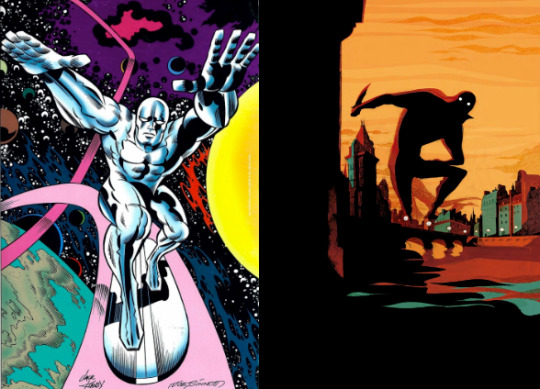
Aviation became a thing in the war years, so they started producing en masse aviation pulps as a subgenre. Zeppelins became popular, so they had a short-lived zeppelin subgenre. Celebrities starred in their own magazines. The American pulps were different from the German pulps, or the Italian pulps, or the Canadian pulps. In China, wuxia arose at a similar time period and with similar themes and distribution. In Brazil, we have “folhetos”, short, poetic, extremely cheap prose often written about romantic heroes and “cangaçeiros”, the closest local equivalent to the American cowboys. In Japan, “light novels” began life as pulp fiction, distributed in exactly the same format and literally sold as such. Pulp fiction has long outlived any and all attempts to define it as 30s literary fiction only.
Likewise, “pulp” and “pulp heroes” are terms employed very, very loosely. Characters like The Shadow and Doc Savage arrived quite late in the history of pulp fiction. You had characters like Jimmie Dale, Bulldog Drummond, Tarzan, Conan, a billion non-descript trenchcoat guys, and before those the likes of Nick Carter and Sexton Blake, dime novel detectives who made the jump to pulp. You had your hero pulps, villain pulps, adventure pulps, romance pulps, horror pulps, weird menace pulps. Science fiction, planetary romance, roman-era adventures, lost race adventures, anything that publishers could sell was turned into pulp stories starring, what else, pulp heroes.
How do you make sense of it all?
The main difference to consider is the mediums they were made for.

Pulp heroes were made for literature, superheroes were made for comic books.
Superheroes NEED to pop out visually, to have bold and flashy and striking designs, because comic books are visual stories first and foremost, who live and die on having attractive, catching character designs and the promise of an entertaining story with them. Pulp heroes, in turn, can often just be ordinary dudes and dudettes and anything in between in trenchcoats or evening wear or furry underwear, or masters of disguise rarely identifiable, because the only thing that needs to visually striking at first glance in a pulp magazine is the cover, so your imagination can get ready to do the rest. Smoking guns, bloody daggers, a romantic embrace, monsters hunched over ladies in peril, incendiary escapes. The characters can look like and be literally anything.
Comic books are a sequential art form where art and writing come together to tell a story, and every illustration must serve the story and vice-versa. It needs to give you an incentive to keep being visually invested in whatever’s going on. Pulp literature stays dead on the page unless animated by your expectations; you may have the illusion of submitting to an experience, but really it’s you expending your imagination to otherwise inert signals. You have to provide the colors and flashy sequences and great meaning yourself, and as a trade, you get much more text to work with in novels than you do in comic books, where the dialogue and narration are fundamentally secondary to the visual, whether it’s a superhero punching stars or a monster covered in blood.
Each art form has its strengths and weaknesses, of course, which are only accentuated when each tries to be of a different kind. There's been pulp heroes that tried making the jump to comics, and comic heroes that made the jump to literature. There’s good, even great examples, of both, but even at their best, there's always some incongruity, because that's not the medium these characters were made for.
Superheroes are characters defined by being extraordinary. The pulp heroes are too, in many cases, distinguished from their literary antecessors because they were too uncanny and weird, a middleground between the folklore/fairy tale heroes and the grounded detective and adventure characters such as Sherlock, and the later far out superheroes. But they don’t necessarily have to be extraordinary. Sometimes they can very well just be completely ordinary characters, caught in bizarre circumstances and managing them as best they can, or simply using skills available to anyone who puts in effort to do good. Often enough the extraordinary comes in the form of a bizarre villain, or a tangled conspiracy, a monster from outside the world, a unique time period. The extraordinary is there, but it doesn’t have to be in the hero.
That is, I’d argue, the other big fundamental difference between the two. "Superhero” is a name we use to define a type of character who fits an extraordinary mold, a Super Hero. It’s a genre, it can be every genre, it’s a shared universe and a stand-alone epic. There are guidelines, structures at work here. Grids, page count, illustrators. The Big Two and their domain over the concept. Academic usage of the term, standards that rule the “genre”, when it is defined as a genre. Malleable and overpowering and adaptable and timeless as the superhero may be, it’s still bound by a certain set of rules and trends.
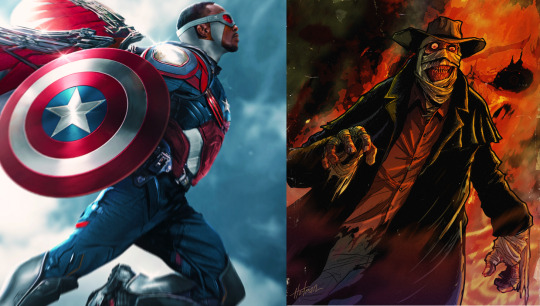
The term “pulp hero” is a term that we use to label just about any character that happens to star in something we recognize as “pulp fiction”, even if it isn’t literally written in pulp, even if it’s decades later. It’s a “metaphor with no brakes in it”. Superheroes can be pulp heroes. The most powerless, unlucky, homeless bum can be a pulp hero, there were entire subgenres of pulp stories based on homeless protagonists or talltale stories told in bars. The cruelest villain can be a pulp hero. Boris Karloff about to stab you with a knife named Ike IS a pulp hero, and so is a space slug on a warpath (look up what happened when Lovecraft and R.E Howard collaborated).
As much as I may dislike the idea of pulp heroes largely only existing in the shadow of superheroes nowadays...that is kinda appropriate, isn’t it? Of course they are going to live and make their homes in the place where the sun doesn’t shine. Where Superman and co would never go to.
Of course the 90s reboots of these characters failed. Because they tried turning these characters into superheroes, and they are not superheroes. They can visit those world, but they don’t belong in them, or anywhere else. They live in places where the light doesn’t touch, worlds much bigger and darker and more vast than you’d ever think at first glance, worlds that we still haven’t fully discovered (over 38% of American pulps no longer exist, 14% survive in less than five scattered copies, to say nothing of all pulps and pulp heroes outside of America). Not lesser, not gone, despite having every reason to. Just different, reborn time and time again. The shadow opposites.
In short: One is represented by Superman. The other is represented by The Shadow. There are worlds far beyond those two, but when you think of the concepts, those are the ones that things always seem to come back to.
82 notes
·
View notes
Text
DIABOLIK LOVERS MORE, BLOOD OFFICIAL VISUAL FANBOOK ー Interview Vol. 1 feat. Saki Ito
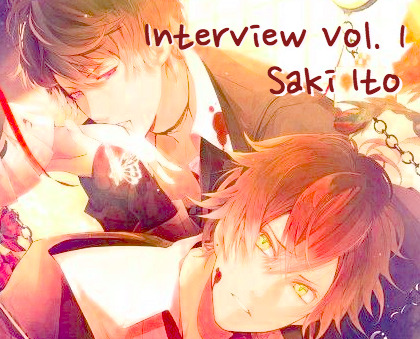
Source: DIABOLIK LOVERS MORE, BLOOD Official Visual Fanbook
Release date: 2013
Huge thank you to @keithvalentinex for providing the raw scans!
SECTION 1: Q&A
Q1. How did you feel when a sequel game got green light?
A: Not only were we fortunate to receive many passionate messages and feedback from the players, but we also received the news of an anime adaption alongside a game sequel, so amidst the joy, I also remember a distinct feeling of responsiblity and pressure.
Q2. Does the feedback you received from the players reflect in any parts of the game?
A: The series features characters who all have very strong and distinct character traits, so they tend to stand out based solely on these specific elements, which is what made us reflect upon the scenario parts of the previous game. Therefore, in the sequel, we decided to flesh them out so we let Idea Factory know that we would like to create sceranio’s on events of their pasts, so we can give a better understanding of how they think as individuals. We received a positive response but this ultimately required quite a bit of scenarios so later both me and Nakamura suffered because of it. (lol) However, even though there is still room for improvement, I would like to think that we succeeded in creating scenario’s in which the players will get to know them on a deeper level.
Q3. Who did you struggle most with when creating the setting for the new characters?
A: Ruki. Both in terms of design and personality. At first we thought of having him be on an almost equal footing with Karlheinz in terms of power and status, so basically the character who stands at the very top of the Mukami family, with everyone following his lead as they have no other choice but to acknowledge his superiority . But he’s a Do-S...We played with various ideas like that.
Q4. What did the process of creating these characters look like?
A: After settling on their visuals and personalities, we moved on to building a set image of them. I was impressed that at the time of initial recording where we would add the voices to these characters, there was already an agreement amongst the production staff about how they viewed these brothers inside their minds.
Q5. Were there any moments during the recording which left a strong impression on you?
A: I am sure everyone feels the same in this regard, but I was very much impressed by Midorikawa Hikaru (Ayato’s VA) and his ability to voice a single line in so many different ways and apply minor adjustment time after time. I was baffled how the same phrase could be voiced in so many different ways, and while this may be embarrassing to admit as part of the production staff, I felt as if I could learn a lot from him.
Q6. How did you approach the blood-sucking scenes?
A: We start by creating a fixed image inside our heads of how each character would suck someone’s blood. However, we initially opted to leave things up to the casted voice actors. We figured that if their voicing was somewhat off from how we envisioned it, we would guide them into the desired direction afterwards, but so far that has yet to happen! The voice actors seem to understand that the blood-sucking scenes are a huge selling point of the Diabolik Lovers franchise, so they anticipated on this and had already thought about which personal quirks they want to include in these scenes before the recording. Afterwards they would tell us things such as ‘I wanted to make it sound a little dirty’ or ‘I imagined ____ would suck blood like this’, showing us their effort to voice these characters while thinking about their personalities, which is why we - the production staff - were able to feel the unique traits of these boys through their performance as well, I believe. I cannot express with words just how greatful I am for everyone’s excellent voice work.
Q7. When writing the scenario’s and the character dialogue, were there any conscious changes you made from the first game?
A: In the first game, there were very little interactions between the different characters, but with the introduction of the Mukami brothers, we focused on these kind of interactions where one of the Sakamaki brothers would fight with one of the Mukami brothers. Additionally, this would allow for us to express the changes in their feelings towards the main character.
Q8. What did you struggle the most with while writing the script?
A: There were just so many different scenarios to write, I recall feeling as if there was no end to it. Every time you think you’re done adjusting one part, you have to move on to the next and by the time you’re done with that, something just doesn’t feel right about the first scenario again...This game includes many scenarios about the characters’ pasts so there would be times where we suddenly went ‘...Hold on!? I feel like the previous scene doesn’t quite make sense anymore...,’ So we’d have to go back and make sure everything remained consistent.
Q9. Which character caused you the most problems while writing the script?
A: Every single one. In case of the Sakamaki brothers, all because of the same reason. For starters, despite this being a sequel game, the intial setting remains the same as before with the main character having arrived at the Sakamaki manor, , so we were worried whether or not the audience would accept this without it feeling weird or off. The Mukami brothers are then added on top of that, so we struggled a lot expressing the wavering feelings of the main character. Each of the Mukami brothers has their own dark past and setting which we came up with beforehand, so it was very difficult to then later add the element of romance to this.
Q10. Is there a character who underwent drastic changes compared to the last game?
A: No. Although the ‘MORE, BLOOD’ games feature the Sakamaki brothers struggling with an immense ‘thirst for blood’ which is different from our previous approach, so we hope this allows the players to enjoy a different side of them.
Q11. The endings are now named ‘Vampire Ending’, ‘Manservant Ending’ and ‘Brute’ Ending. Could you tell us what kind of thought you put into these names?
A: They do each have their own fixed image attached to them. We divided them into the ‘Vampire Ending’ which is supposed to be the most natural ending. The ‘Manservant Ending’ which emphasizes the element of sadism the strongest and lastly the ‘Brute Ending’ which is the most violent. Depending on the character, there might be minor changes such as the main character developing sadistic tendencies herself or it being another character who grows violent. We hope the audience will enjoy this wide array of endings.
Q12. What are parts which have greatly improved or parts you want us to focus on in comparison to the first game?
A: My apologies for repeating myself, but it would have to be the scenarios. Also please pay attention to the upgraded sprite artwork for everyone, as well as the addition of the sprites for the brothers as children!
Q13. Why do you think the series has received such a great amount of support?
A: During the development of the first set of CDs, we made them with a specific niche audience in mind, so never did we expect the franchise would grow this large. We truly are grateful. We would like to believe that Satoi-sama’s illustration are the biggest contributor in this case. I was already acquaintanced with Satoi-sama at that point but due to certain circumstances, we weren’t able to work on a project together. However, when the development for Diabolik Lovers started, I immediately reached out to her. I believe that the way she draws these Do-S Vampires as handsome guys is what the fans enjoy the most!
Q14. Please leave a message for the fans.
A: First of all, thank you all from the bottom of my heart. If it wasn’t for you guys’ reactions, we wouldn’t have been able to deliver this much content. I won’t go as far as to tell you to continue to loving ‘DIABOLIK LOVERS’ and its characters forever...! Even if it’s somewhere in the very back of your mind, I’d be happy if you could at least hold onto the fond memories of these characters. Honestly, thank you so so much.
SECTION 2: THEIR FAVORITE EPISODES
Sakamaki brothers: Laito’s Vampire Ending. It conveys that feeling of loving someone, yet still keeping you on the edge of your seat as he doesn’t quite fully want to admit to his own feelings, even though you can tell that he does properly love the main character, which made me feel joyful inside.
Mukami brothers: Rather than one specific scene, I loved the interactions between the Mukami brothers. When they are all enjoying a meal together, they would fight over the food, or Kou would make a fuss because he wants to eat Vongole Bianco. I found it cute how they would talk in a way you’d expect from normal high school boys.
SECTION 3: SAKI ITO CHOOSES ー SITUATION-DEPENDENT CHARACTER SELECT
Who would you choose in these situations? What’s the developer’s opinion?
S1. To sleep together with?
Best: Shuu, he probably wouldn’t bother me.
Worst: Reiji, he seems like the type to get upset if you don’t keep perfectly still while sleeping.
S2. To go on a trip together with?
Best: Ruki, I feel like he would come fully prepped.
Worst: Azusa, I wouldn’t be able to enjoy my trip if I get hurt because of him.
S3. To eat together with?
Best: Shuu, I feel like our eating styles would match.
Worst: Reiji, I’d constantly feel nervous.
S4. To study with?
Best: Ruki, I feel like he’d be able to explain things in a comprehensive manner.
Worst: Laito because he might just blow air into my ear all of a sudden.
S5. To go on a date with?
Best: Kou, he probably knows all the good places so it could be fun.
Worst: Kanato, I can’t stand the thought of him suddenly lashing out at me.
S6. To play a video game with?
Best: Yuma, I feel like he wouldn’t be the best at it, but it’d still be enjoyable regardless.
Worst: Subaru, he would destroy the console!
S7. To play sports with?
Best: Kou, I can imagine his sweat sparkling in the light as it bounces off him.
Worst: Reiji, he seems stiff.
S8. To go on a drive with?
Best: Ayato, it just seems fun.
Worst: Yuma, he strikes me as a speed devil.
#diabolik lovers#dialovers#diabolik lovers translation#diabolik lovers more blood official visual fanbook#diabolik lovers interview#saki ito
92 notes
·
View notes
Note
Annon-Guy: Forgive me if you disagree, but how'd you feel about Goldlewis being the first DLC Character for StrIVe? Me, I considered it to be a MAJOR slap in the face! I know we got Chaos as DLC #3 and Goldlewis is a good character (although the whole Behemoth Typhoon half-circle shenanigans was overkill and unnecessary) and he's fun, but why'd we get him first instead of Choas, who's one of the two main antagonists of StrIVe along with I-No?
The "importance" of the Order in which DLC is released can sometimes be influenced by the timing of when the DLC was released, but also fan expectations and demand.
Releasing a "new character" is always going to raise the stakes and levels of excitement for a game… but the decision to "delay" when a character gets released is also important.
In the old days, fighting game rosters were mostly self-contained (meaning there was no DLC), but that also meant that the games themselves took that much longer to make… and there was more likely going to be glitches, bugs, and problems that would need to be dealt with before a game's release rather than after.
Now the concept of DLC gives developers a bit more leeway to put more effort in to making extra content, not just in terms of how long it takes for an initial release, but also in terms of fixing any problems that happen along the way.
Releasing a mysterious character "later" rather than right away is still going to build some excitement for the game.
Even if players don't know what kind of character to expect, they can at least know that this isn't just a character you get to play as… it's a character you GET TO FIGHT AGAINST.
Also, your mileage may vary on what is considered "overkill" and "unnecessary"… there's plenty of players out there who like a good challenge or technical character to overcome the nuances of.
Goldlewis is an "effort" character… meaning that you need to overcome a certain amount of effort to achieve substantial things with him.
In terms of why Chaos was released "later"… it probably has more to do with the fact they were still getting the kinks out of his design and mechanics back during development.
As you may recall, they even had to re-adjust the Faultless Defense system a bit, just to deal with Happy Chaos' bullets as projectiles.
Some characters will simply "take longer to develop" and fix than others, based on the unique properties of their attacks and hit effects, among other things.
Even Baiken's new parry had problems that needed fixing… so sometimes it takes a bit to learn what needs to be adjusted.
Of course, in general, that's what Beta Testing is for… but sometimes the Beta Testers on-hand don't discover everything, and it's then up to the gaming fanbase to help point out other issues that need fixing.
Though, even if there are issues… most often the case is that a character that is going to garner a lot of excitement upon release is usually saved for last in the roster…
I mean, why not save the best for last? It allows excitement for the game to linger that much longer, for one thing.
And for another, there's still plenty of people who don't know the finer nuances of the game, and there's always going to be players who pick a character, not knowing what to expect… and end up adoring that character as their first-ever Main.
Sometimes that sort of thing happens… so no matter what your first impressions of a character may be… there's always going to be someone who picks up that character and adapts to them like a Fish in Water.
And believe me… Goldlewis is a major threat in Tournaments right now… so that's MORE THAN ENOUGH PROOF that he's got his fans and strong players.
As for my overall opinions on DLC characters... I usually don't critique characters until I have the entire roster in my hands. I'll give impressions and initial thoughts though.
Usually it's best to wait until the game's entire roster is revealed and all updates are added to rebalance the game (i.e. let the game reach its final form) before coming to any strong conclusions.
5 notes
·
View notes
Text
Why 2HA adaptation might not be as bad as we think...
Okay so BL novel “The Husky and His White Cat Shizun” (chinese title: “二哈和他的白猫师尊”) aka 2HA is getting a live adaption which will be called “Immortality” (“皓衣行”). I know that usually, fans of original works are less than excited about this kinds of news and with good reasons. The issue is that those who buy the IP rights to a novel simply see its popularity and think that they can profit off of it without actually trying to understand the reason behind its popularity. Too often, BL fans see themselves forced to endure any of the following: 1) sex change of one of the male leads, 2) creation of a random female love interest, 3) turning a happy end into a bad end, 4) adding a bunch of scenes unrelated to our main pair that ends up dragging the series, 5) turning romance into brotherly affection... the list goes on and on. Sometimes, companies think that as long as they film any two guys together and sell a bit of physical touching here and there, fans will jump on it like rabid dogs which... is kinda stupid because, y’know, we have eyes (and standards) too.
So obviously, with the unprecedented popularity that came with the release of The Untamed, even more producers are starting to see the potential of danmei (BL) novels and with it came an onslaught of IP rights being bought and adapted. The list is pretty extensive, with some big names that I’m sure anyone who’s even slightly in the Chinese BL novel community has heard of before. Of course, included in that list, with the casting for the leads done and filming underway, is 2HA.
Quick overview of the story for those of you that don’t know: the story is set in the POV of the “gong” (top), a character named Mo Ran (also known as Mo Weiyu) who is the disciple of Chu Wanning, the “shou” (bottom) of our story. In his original life, Mo Ran had become the Emperor of the cultivation world through slaughter and tyranny, with the only one ever coming close to stopping him being his shizun, Chu Wanning, who eventually lost his life trying to stop him. After achieving the top by committing pretty much all crimes and sins known to men, weary and tired, Mo Ran decides to take his own life and ends it all. Unexpectedly, instead of dying and going to Hell, he transmigrated to the first year he became a disciple. As a thirty-something man in the body of a teen, he decides to do things right this time around and save the one he couldn’t save the first time around. As he goes through life a second time, truth after truths reveal themselves, with the biggest surprise being that the Shizun he hated so much in his previous life, and who Mo Ran thought hated/scorned him, actually turned out to be protecting him the entire time.
Mo Ran, in his past life, was powerful, cruel, merciless and arrogant. There was nothing he could not obtain and he knew it. He was cynical, had a very jaded view of the world and was kind of unstable (lots of mood swings and temper tantrums). After his rebirth, he still maintained some of the arrogance and cynicism, but is more mischievous, confident and cheeky. He is very much like a husky, looks kind of scary and big, but can be extremely loyal to the ones he recognizes and can be a bit dumb sometimes. Chu Wanning on the other hand, is an unflappable person with a frost-like exterior, but a heart of gold. Basically, he cares a lot but it’s easier for him to look like he doesn’t than to voice his feelings. He gets embarrassed easily and covers his embarrassment using anger. He is extremely strong, likes peace and quiet, and always abides by the rules.
Their relationship is kind of complicated. Initially, Mo Ran was in love with a fellow disciple called Shi Mei (despite the word meaning junior female disciple in Chinese, it’s actually the name of a male character). In the original timeline, Shi Mei died and that was the start of Mo Ran’s decline. After his rebirth, Mo Ran decides that he will do everything in his power to prevent Shi Mei from dying again. Don’t be mistaken though, Shi Mei is NOT the male lead. You’ll see as you read more that despite being in love with Shi Mei, Mo Ran is pretty obsessed with Chu Wanning because their relationship was kind of... complicated in the original timeline.
This is pretty much the premise for the story, but do be warned that it goes much deeper and darker than what you might expect (it’s rated R-18 for a reason). So why exactly am I writing all of this? To put it simply, I just kind of want to hype up the series and its adaptation a little, or at least, pique enough interest to give the live action adaptation a chance. Not gonna lie, when I heard 2HA was getting adapted, I was pretty skeptical because how. Mo Ran and Chu Wanning had a pretty physical relationship in the pre-rebirth timeline and that’s partially where the obsession that Mo Ran feels towards Chu Wanning stems from. There’s just basically a lot of unresolved sexual tension between them throughout the novel that I simply couldn’t see getting adapted. However, after thinking about it and reevaluating things from a low-expectations-standpoint, I think it might actually be possible to film something close enough to the original work. Here are some of the factors that influenced my opinion:
First, the series is set to air for 50 episodes (just like The Untamed). Why is the number of episodes important? Because it will determine how closely the adaptation will follow the original story and how much random stuff they can fit into it. Let’s take a step back and evaluate: 2HA’s novel has 311 chapters + extras while MDZS has 113 + extras. Obviously, people might have an issue with the number of episodes (”How are you going to air the same amount of episodes for a series that’s thrice as long??”) but I think it’s a good amount. Why? Because it pretty much guarantees a solid pacing that’ll keep the story moving forward without stagnating. I don’t think there is too much to worry in terms of too much source material being cut because quite a few chapters are R-18/romantic lining scenes that would not have gotten adapted anyways. Once those get deleted, I think 50 episodes is an acceptable amount.
Second, the entire production seems to be solid. The rights were actually bought by Tencent who, if you forgot, was also responsible for The Untamed. With prior success, I believe that they now have a pretty solid idea of how things should be run. Also, the CGI and world-design team is the same one as for Ashes of Love, which has me pretty stoked because while CG in chinese dramas has always been a hit or miss, Ashes of Love is definitely amongst some of the best I’ve seen (see below for examples). (P.S. there are also rumours that Lin Hai, the one responsible for The Untamed’s OST, might be working on 2HA but this is mere speculation at this point.) Overall, 2HA is looking to be like the most high-profile and expensive BL adaption yet.
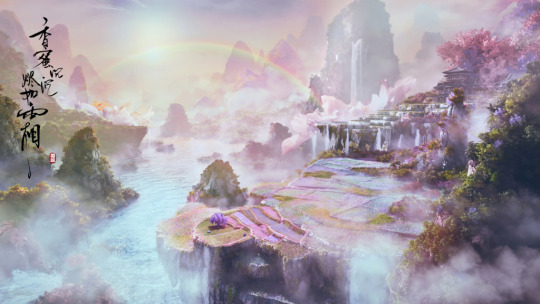

Third and finally, the casting.
Holy.
Okay.
This is what has me the most hyped.
Let’s start with Shi Mei, who will be portrayed by actress Chen Yao (or Sebrina Chen).

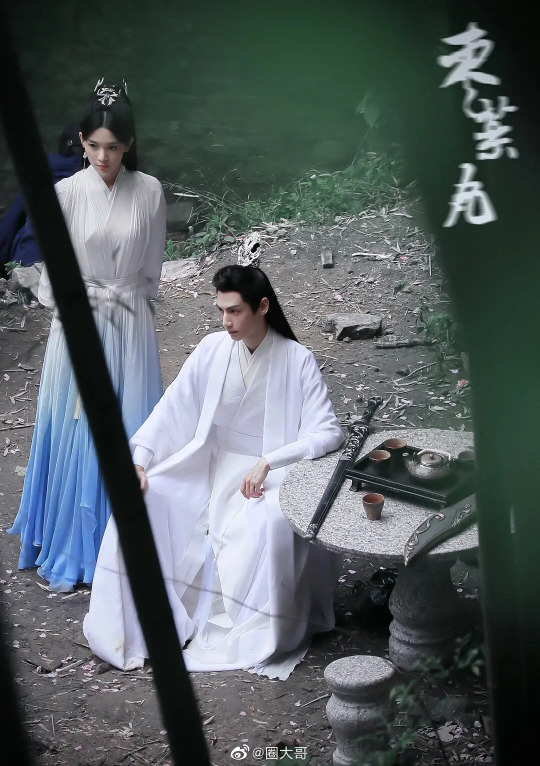
I know I’ve said that despite the name, Shi Mei is a male. As it turns out, likely for censorship reasons, “Immortality” could not escape from the clutches of the dreaded sex change so they went ahead and turned him into a girl. While not ideal, in my opinion, it actually works out pretty nicely here. In this case, it means that Mo Ran is in love with a female character which would further draw censorship’s attention away from the fact that Mo Ran really has a thing for his beautiful shizun. While it would have been perfect if everything could go according to source material, the fact that it’s Shi Mei that went through a sex change actually works pretty favourably in the grand scheme of things. Not to mention the actress set to play Shi Mei has some good experience acting similar roles so overall, I say that I trust her.
Next, we have Chu Wanning who will be played by Luo Yunxi (or Leo Luo).
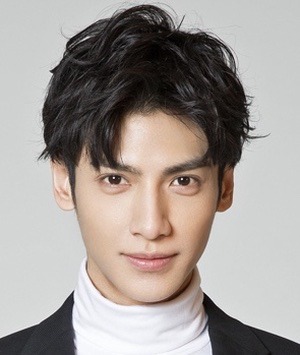
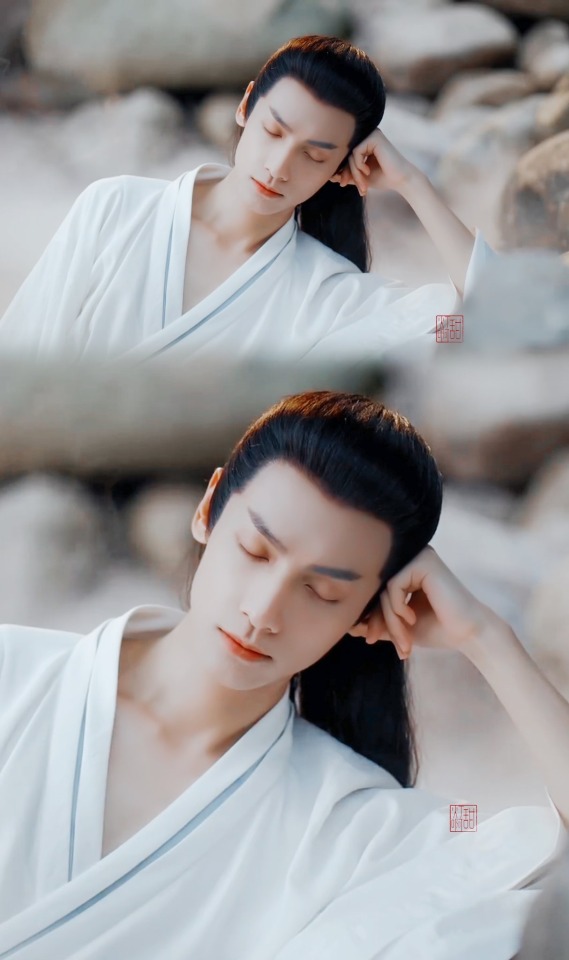
For this character, I have no worries whatsoever. If you’re unfamiliar with this actor, I highly recommend you give Ashes of Love a try. He played the 2nd lead and ugh. He’s so good at playing beautiful and elegant characters that are forced to undergo a ton of suffering and pain. Luo Yunxi used to be a professional ballet dancer so he moves with grace and his fight scenes are amazing to watch. Also, he has great control over his facial expressions. He’s able to act out characters that suffer a lot without making them seem weak or powerless. Even the way he cries can be considered both beautiful and heartbreaking.
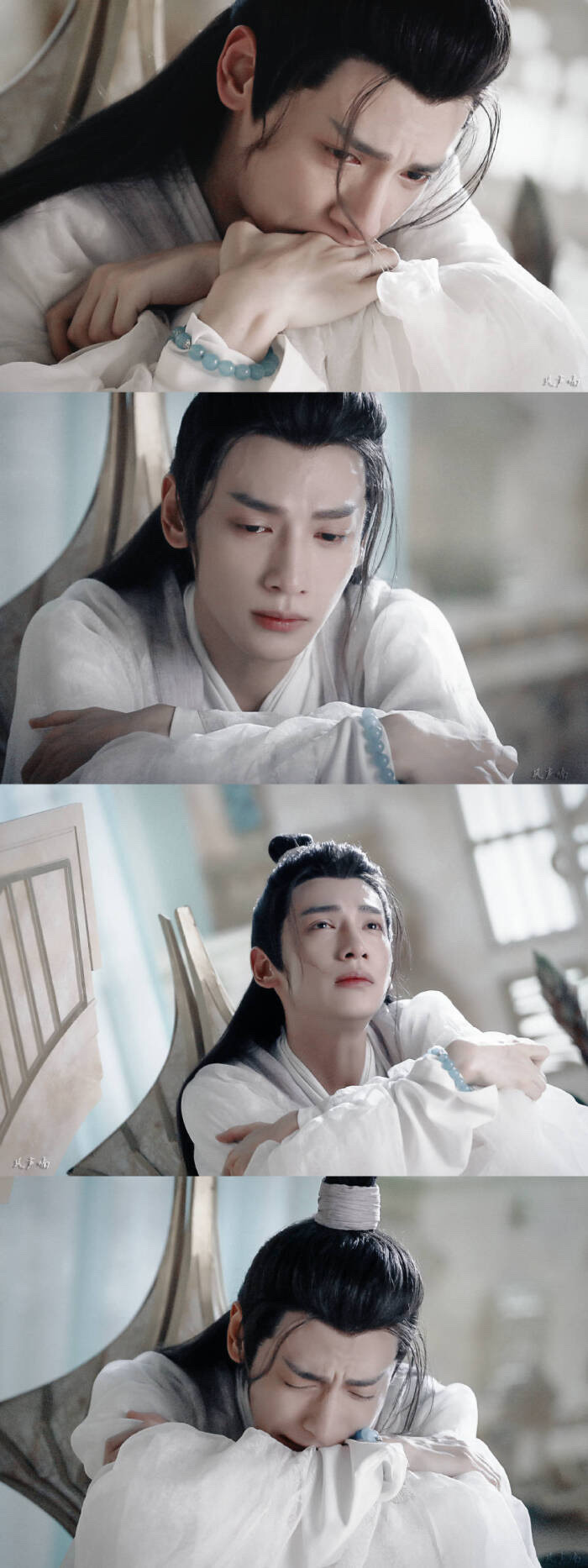
Finally, we have Mo Ran who will be portrayed by Chen Feiyu (or Arthur Chen).
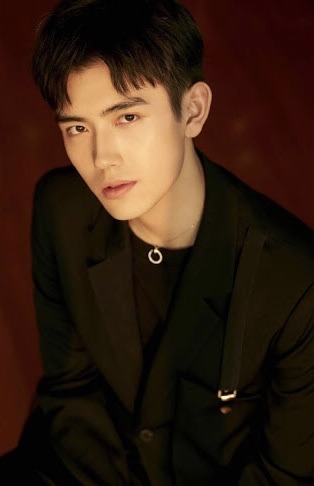
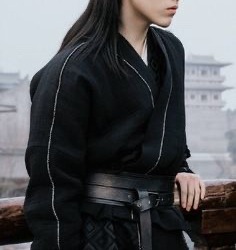
Mo Ran is an extremely complex character. From pre-rebirth’s insanity and arrogance, to post-rebirth’s hope and reservation, to post-revelation’s love and devotion, the actor’s going to have a lot on his plate. Originally, when I first googled him, I thought that while he’d manage to pull off post-rebirth teen!Mo Ran fairly well given how clean and refreshing his face looks, he’d have a harder time pulling off pre-rebirth’s arrogance, craziness and general “hardness”. However, after seeing some costume designs and makeup edits, I think that the boy might just pull it off. Also, while the actor is nowhere near as solid as Luo Yunxi is, it seems that he’s willing to put in extra time and effort (as seen by his Weibo post about how he’d been studying the source material) to make up for it. I think that with enough dedication, he might just be able to pull it off.
(Psssst! By the way, keeping this strictly between you and me, another reason why I’m such a fan of this pair is because of the height difference. I mean just look at this?? Their height difference is pretty much bang on with the novel height difference after Mo Ran grew past Chu Wanning’s height. Not to mention, don’t tell me you see this and don’t automatically picture a the big dorky puppy following his reserved and cool master around?)
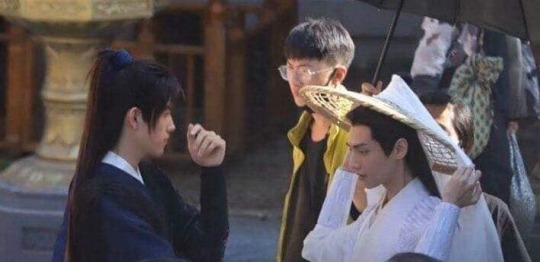
So yeah, all of this just to say that it might be okay to kind of have some expectations for 2HA. I really want to keep my own expectations down as low as possible given the amount of times we’ve been burned but I want to remain hopeful that, with the success of The Untamed, it can pave the way for better and more faithful danmei adaptations, with 2HA being one of them.
#the husky and his white cat shizun#二哈和他的白猫师尊#2ha#immortality#皓衣行#haoyixing#luo yunxi#chen feiyu#chen yao#leo luo#arthur chen#sebrina chen#chu wanning#mo ran#mo weiyu#long post#talking with zb
434 notes
·
View notes
Text
Musical Offerings for the New Year || What is “Radical Music” in 2021?
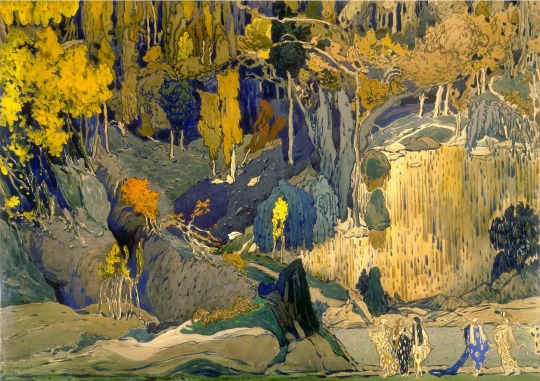
Near the end of 2020, a bunch of musicians populating a chatroom, including myself, each submitted ten minutes’ worth of our work to another musician, Chimeratio, who generously compiled it all into a set totaling nearly ten hours.¹ The work didn’t need to be new; just what we thought might best represent our abilities/style(s) and/or perhaps what we were especially pleased with. The set premiered in late January. Since I have some tentative plans for reorienting Brick By Brick this year, while not overriding its emphases, I wanted to share that music with anyone who’s interested.
I compiled the four videos into a playlist, although you can also access them individually: here (1), here (2), here (3), and here (4). If you care to, and are on a computer, you can also view the accompanying chatlog and read people’s responses from when they were listening to the live broadcast.
The compulsion for this project was sparked by excited discussions over and usage of the term “digital fusion”, most helpfully propagated by Aivi Tran, designating a computer-based body of work that for years lacked the rooftop of a commonly agreed upon genre-name. While describing my music has never been a big concern, even if it’s usually felt impossible (what, for example, is this? or this? I dunno!), I’ve appreciated how the spread and application of this term has brought together people who may have felt isolated.²
As “digital fusion” gained designative traction, I witnessed the activity in the aforementioned chatroom explode over the course of a few days. Before, a day’s discussion might’ve been a few dozen messages; now, there were dozens of messages every half-minute. This had positive and negative ramifications, the negative being that conversations often proceeded at a pace of rapidity which precluded concentrated thought. Eventually, I bowed out because the rapidity exceeded my threshold for meaningful interaction; but I was glad that significant invigoration was going on.
I wanted to share this music also because it intersects with thoughts and talks I’ve been having stemming from the question, “What is ‘radical music’ in 2021?” This was stimulated by a 2014 talk given by the writer Mark Fisher, wherein he contends that, were we to play prominent “cutting edge” music from now to people twenty years ago, very nearly none of it would be aesthetically shocking, bizarre, or revelatory (think of playing house music to an audience in the early 1960s!). Fisher also observes a trend of returning to music which once was seen as the future -- as if, deprived of a shared prograde vision, imaginations turn hazily retrograde; ergo, genres such as synthwave or albums like Daft Punk’s Random Access Memories.
It isn’t my goal here to argue about the “end of history.” Fisher’s time-travel hypothetical, however, rings loud and true to me. Visible musical radicalism has, for at least a decade, been strictly extra-musical, in the sense of songs like “This is America” or “WAP”, where one’s response is primarily to the spectacle of the music video, the performer’s identistic markers, and/or the manner in which the lyrics intersect with (mostly US-centric) ideological hotspots. Musically, there is really nothing radical here. Any vociferous condemnations or defenses of a song like “WAP” deal in moralizing reactions to semantics or imagery: how progressive or regressive is the political aspect? how propelled or repelled are we by the word “pussy”?
It would be a mistake, and simply wrong, to assert that the only music one can enjoy escapes the parameters outlined above; and my inability to coherently categorize some of my own music hardly raises that portion to the status of radicality. But the question here pertains to what is being made, and I think that if we’re going to seriously consider the nature of truly radical music today, we do need to question if such a quality can prominently exist when our hyper-fast consumerist cycle seems to forbid not just sustained, lifelong relationships to artwork but also the local, unhurried nourishment of creative gestation. Now, in my opinion, there are good, even great, examples of radical music still being made in deep Internet-burrows, and for evidence of that I would offer some of the material contained in the linked playlists. Moreover, I’d say that this quality can exist in part because these little artistic communities are so buried.
Let me share a quote that another person shared with me recently:
For culture to shift, you need pockets of isolated humanity. Since all pockets of humanity (outside of the perpetually isolated indigenous people in remote wilderness) are connected in instantaneous fashion, independent ideas aren’t allowed to ferment on their own. When you cook a meal, you have to bring ingredients together that have had time to grow, ferment, or decompose separately. A cucumber starts out as a seed, then you mix it with the soil, water and sunlight. You can’t bring the seed, soil, water and sunlight to the kitchen from the get-go. When you throw those things in to the mixture without letting them mature, the flavor cannot stand out on its own. Same thing with art and fashion. A kid in Russia can come up with a new way to dance, gets filmed on a phone, it goes viral quickly but gets lost in the morass of all of the other multitudinous forms of dance. Sure it spread far and wide, but it gets forgotten in a week. In the past, his new art form would have been confined locally, nurtured, honed, then spread geographically, creating a distinct new cultural idiosyncrasy with a strong support base. By the time it was big enough to be presented globally, it was already a cultural phenomenon locally. This isn’t possible anymore. We’re consuming too many unripened fruits.
The main impression I have here is that radical music today will, and must be, folk music. Our common idea of folkiness might be the scrappy singer strumming a guitar, but my interpretive reference rather has to do with the idea of a music being written, first of all, for one’s self, and then shared with a small-scale community, which in turn helps the artist grow at their own pace. This transcends a dependence upon image, the primacy of acoustic instrumentation, or the signaling of sincerity versus insincerity. It is a return to the valuation of outsider art, so rare nowadays. As someone who I was recently in dialogue with wrote, “Where can you find new genuine folk music? Pretty much just with your friends, imo. Even then, the global world is so influential and seeps into any crack it can find. I think vaporwave was radical and folk for a while. Grant Forbes made that music way before the world knew about it.”
Sometimes, a lot of fuss is made over what’s seen as “gatekeeping” within certain communities. It can be, depending on the context, justifiable to question and critique this behavior. At other times, the effort of maintaining a level of exclusivity, of retaining an idiosyncratic shapeliness to the communal organism, can be a legitimate attempt to protect the personal, interpersonal, and cultural aspects from the flattening effect of monoculture. Hypothetically, I welcome the Castlevania TV series and Super Smash Bros. Ultimate having introduced new and younger demographics to Castlevania. In actuality, stuff like “wholesome sad gay himbo Alucard”, image macros, and neurotic “stan” fanfiction being what’s now first associated with the series makes me want to put as much distance as possible between my interests and those latecoming impositions.
The group-terminology David Chapman uses in his essay “Geeks, MOPs, and Sociopaths in Subculture Evolution” is kinda cringey, but some of the cultural/behavioral patterns he lays out are relevant to the topic. Give it a look. If we cross his belief that “[subcultures] are no longer the primary drivers of cultural development” with our contemporary consume-and-dispose customs, we’re left with the predicament of it’s even worth attempting to bring radical/outsider art beyond its rhizomatic habitat. This is troubling, because it would mean that artistic radicality no longer might not only refuse to but cannot encompass cultural upheaval. It would be like if dance music were invented and -- instead of progressively permeating nightlife, stimulating countercultural trends, and ultimately being adapted as the basis for pop music globally -- only were listened to via headphones by a few thousand people on their own, stimulated a group meeting once a year or two, and never affected music beyond a niche-within-a-niche. That’s a very sad picture to me.
⁂
¹ Chimeratio has also maintained an excellent blog on here dedicated to looking at videogame music written in irregular time signatures, far preceding higher-profile examinations like 8-bit Music Theory’s video on the same topic.
² For myself, creative isolation has had its uses, because it has led me down routes that are highly personalized. The isolation can be dispiriting too. Although a lot of my music is videogame-music-adjacent, almost none of it uses “authentic” technology, such as PSG synthesizers or FM synthesis; and the identification of those sounds is fairly important for recognition.
30 notes
·
View notes